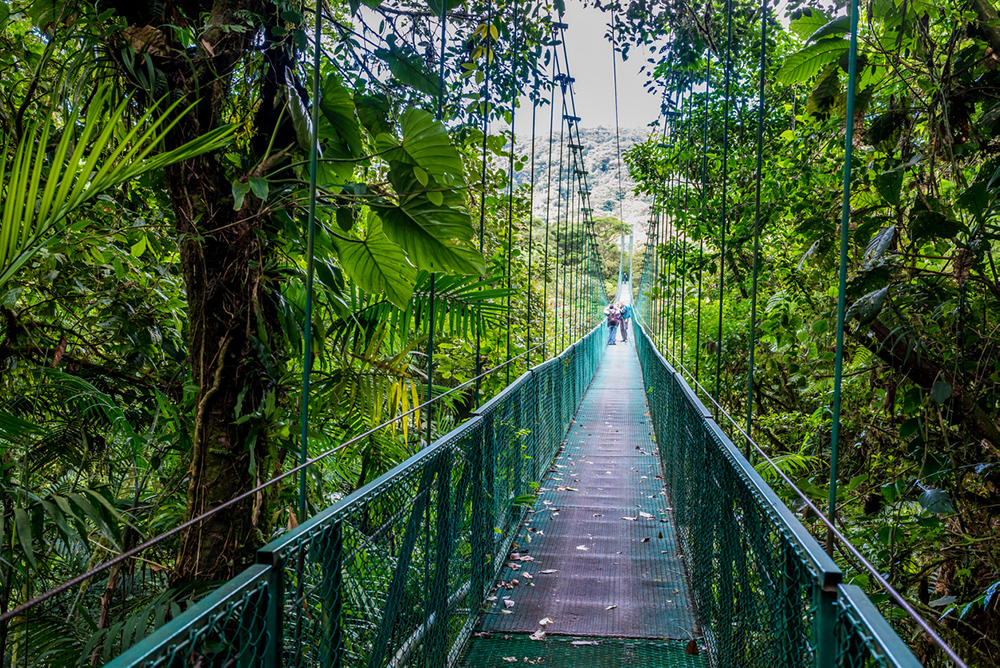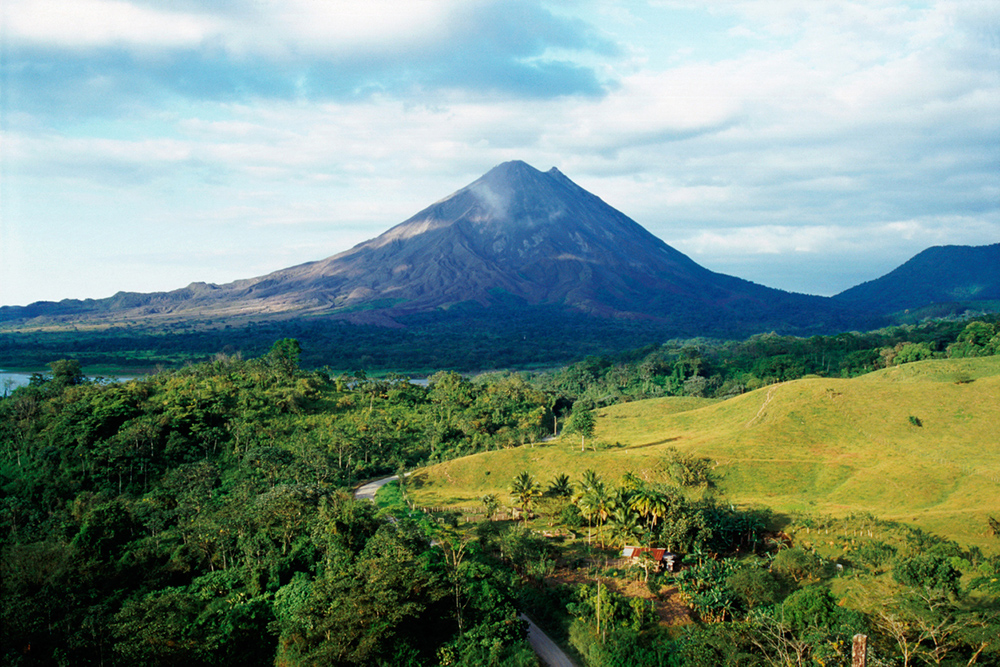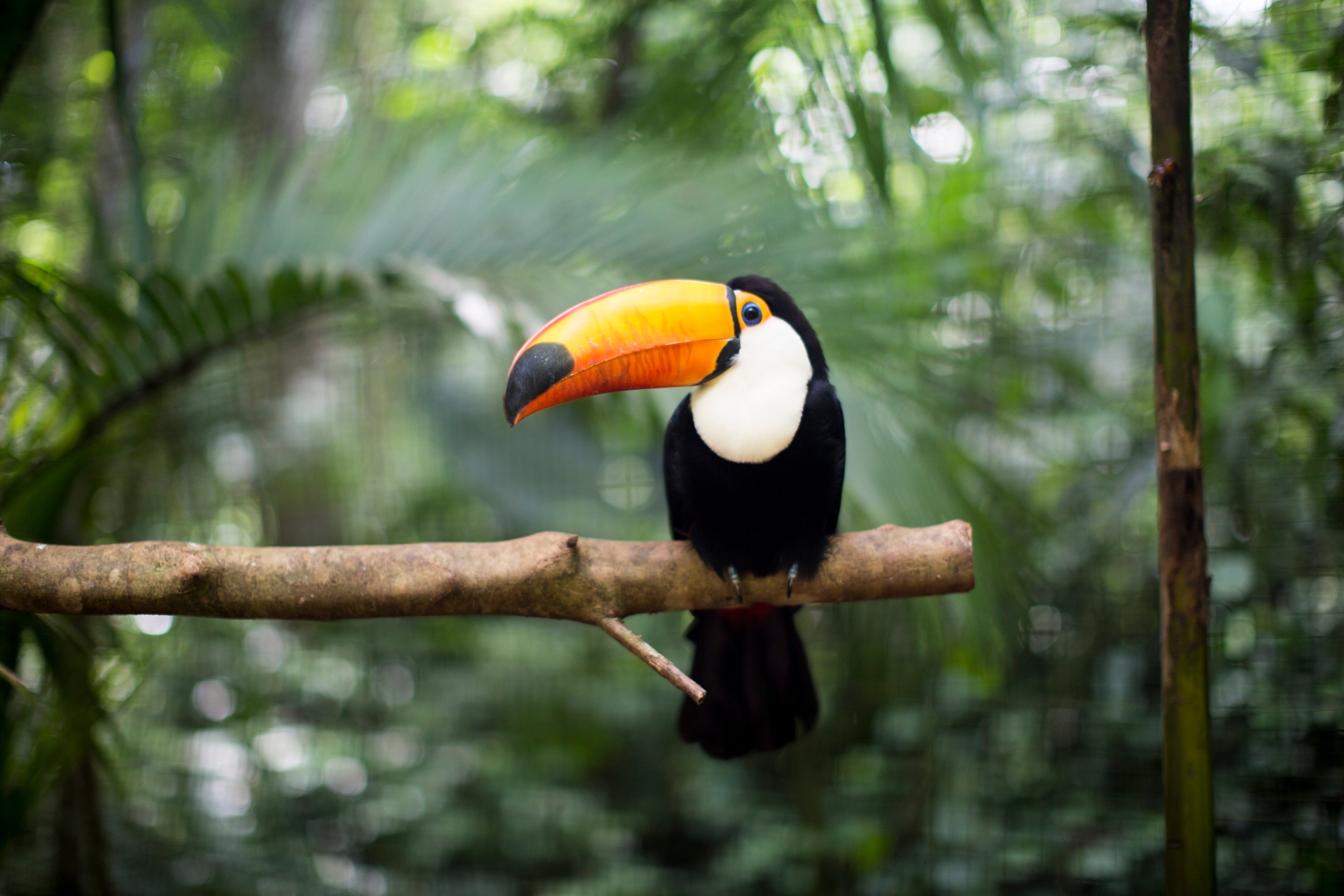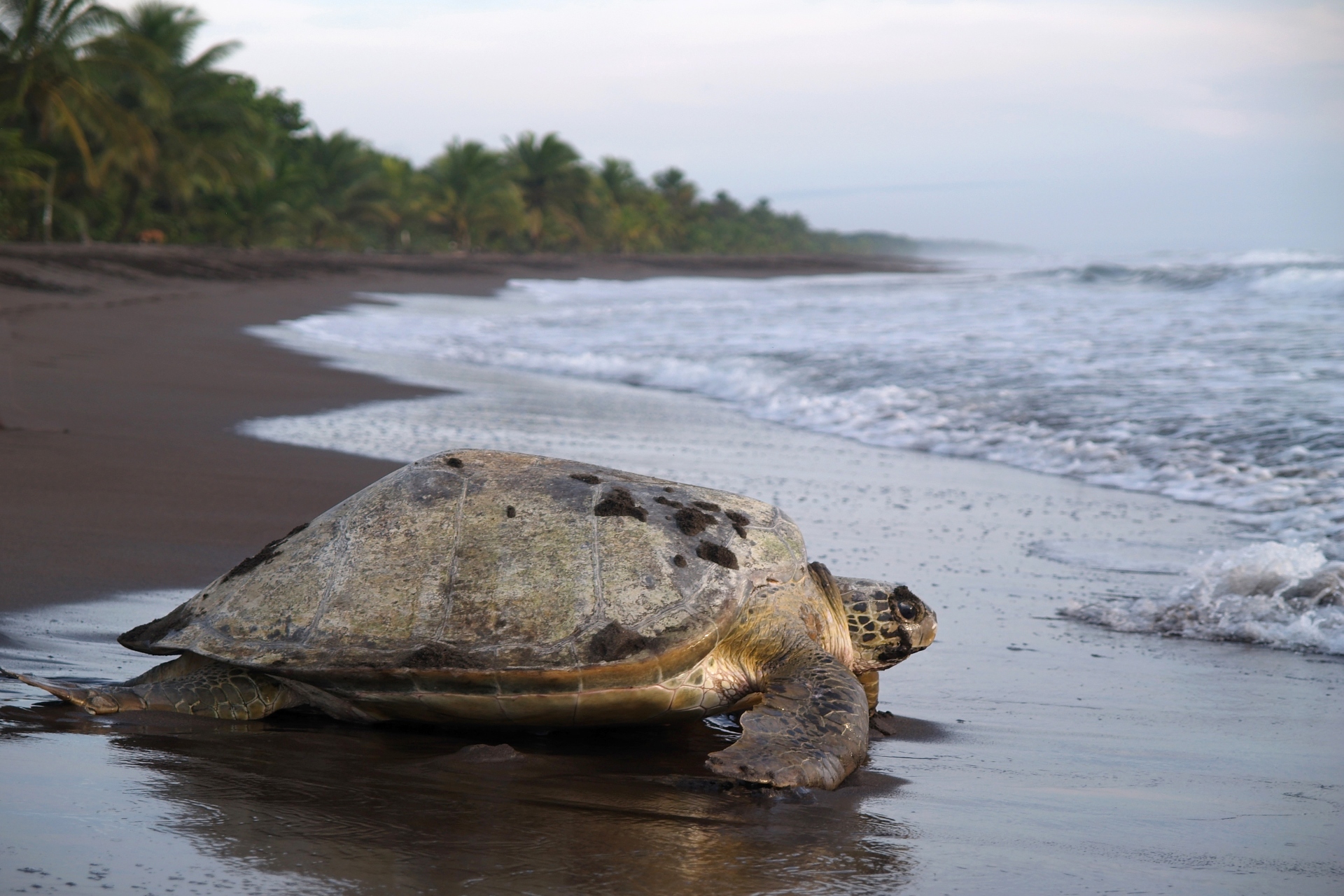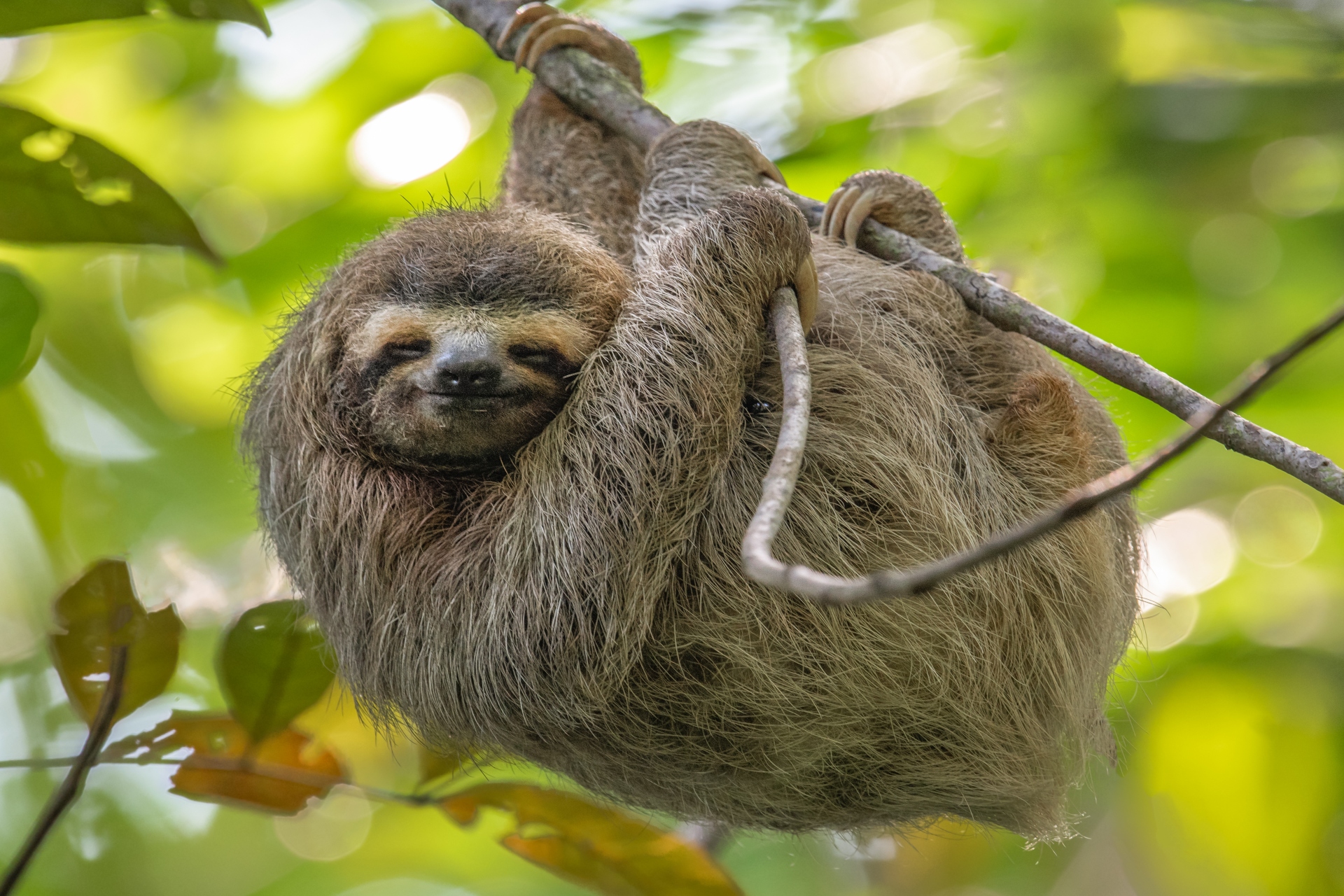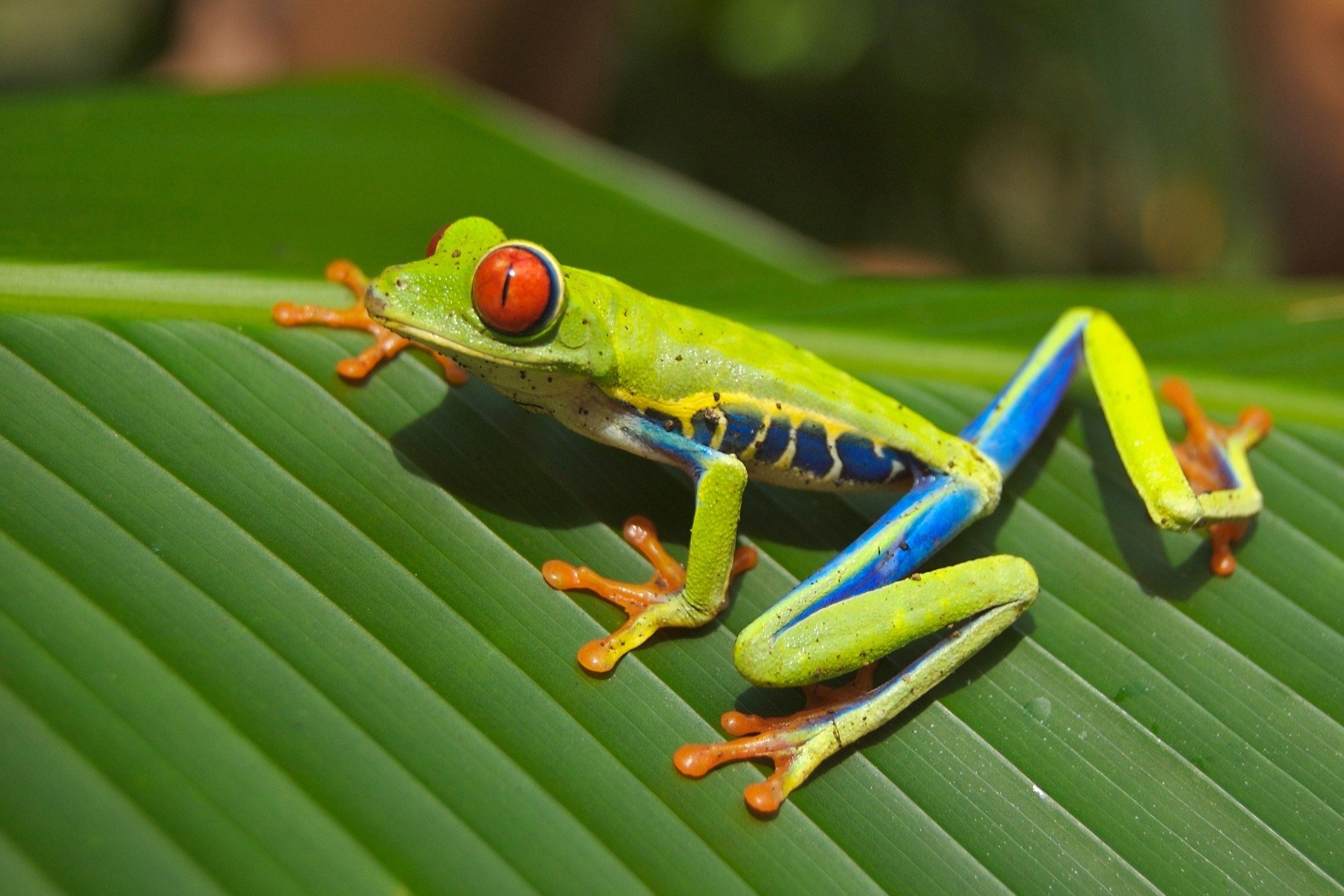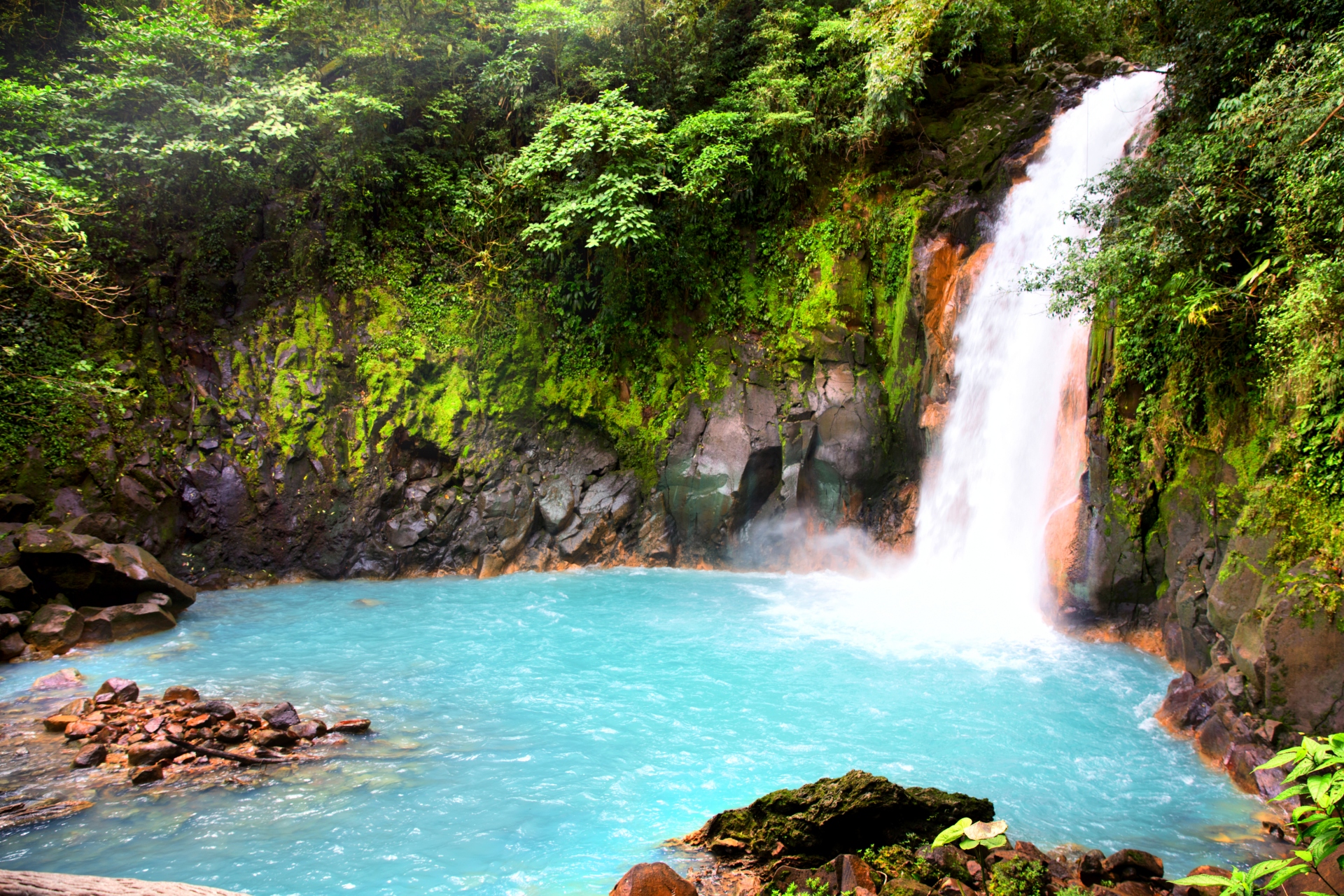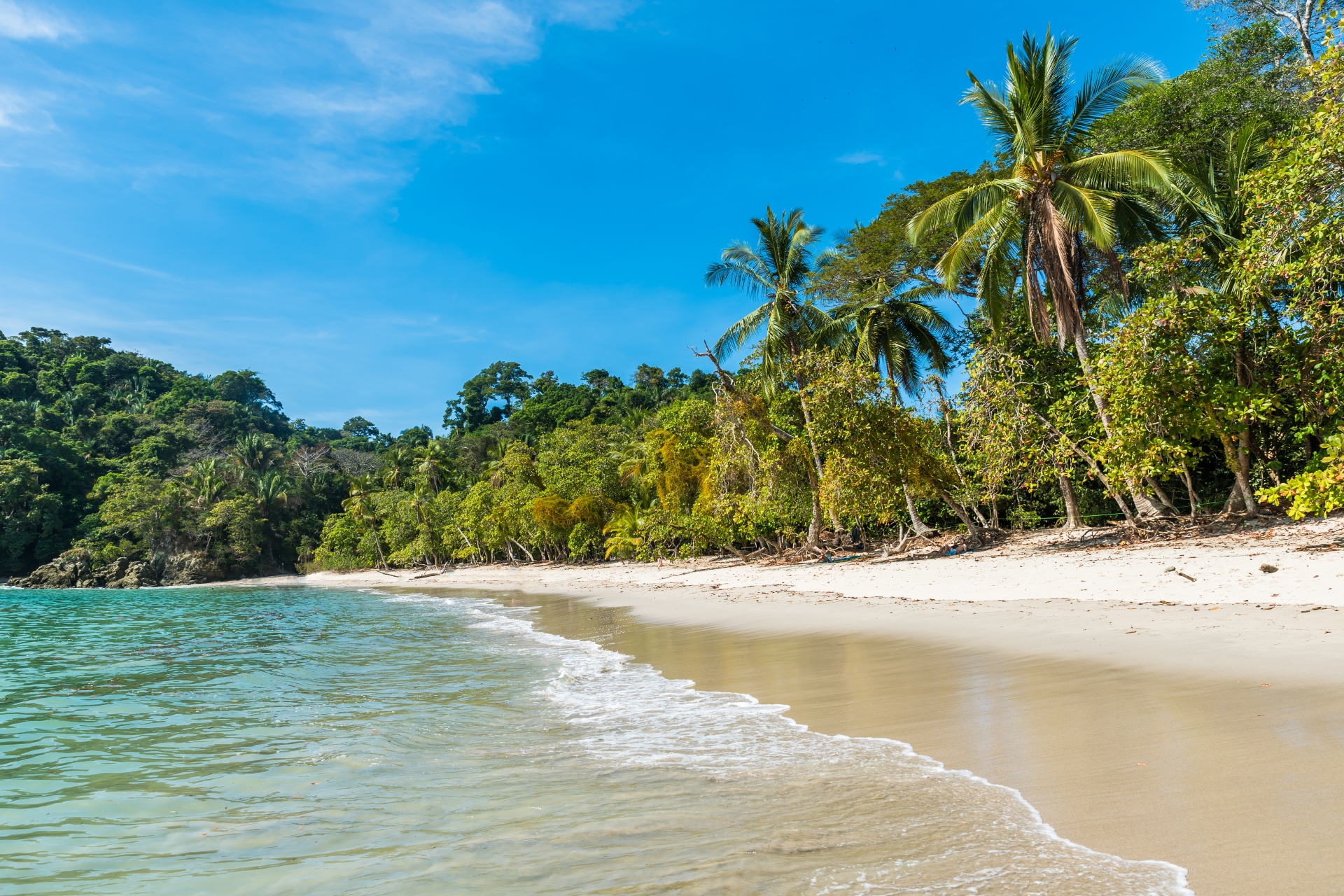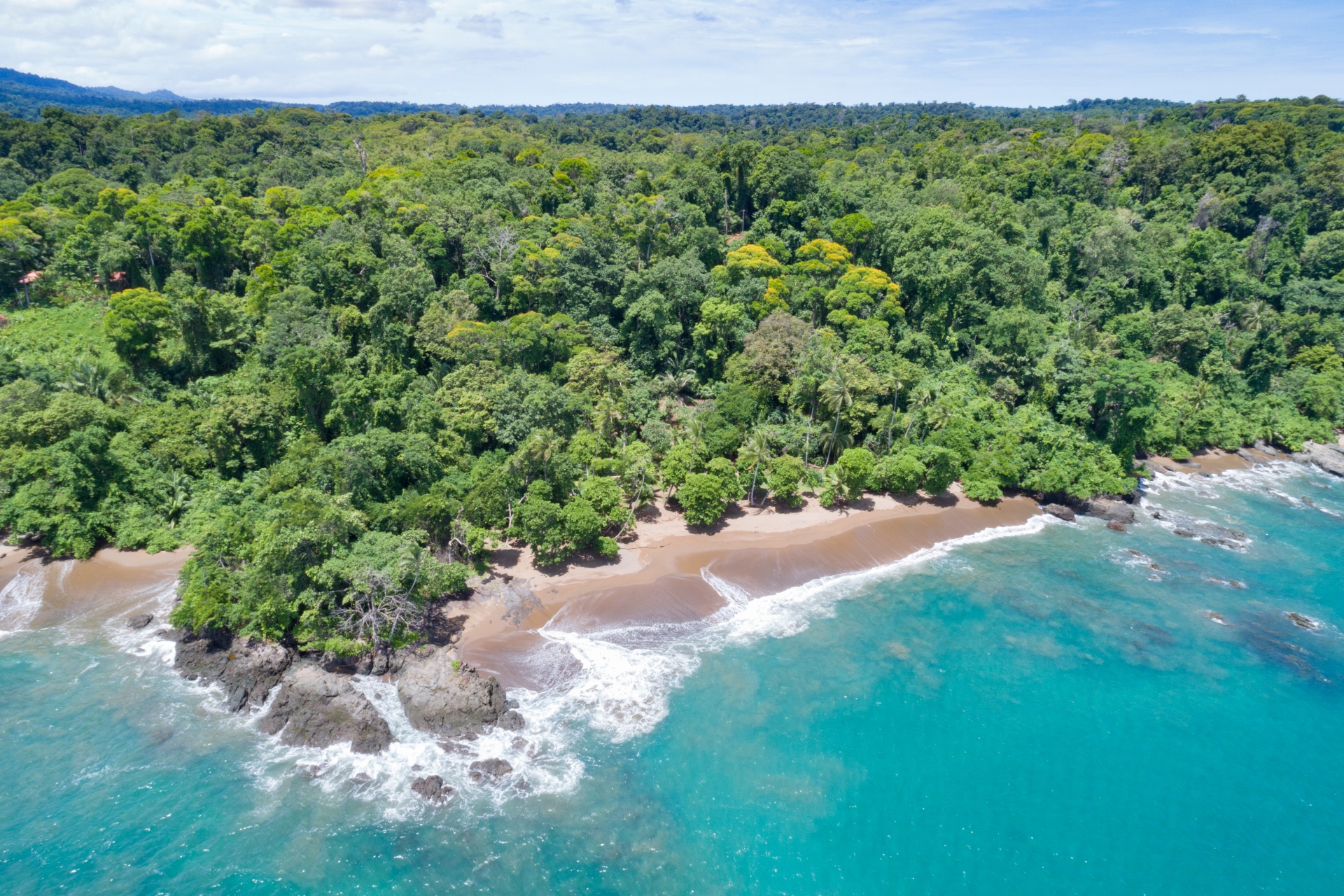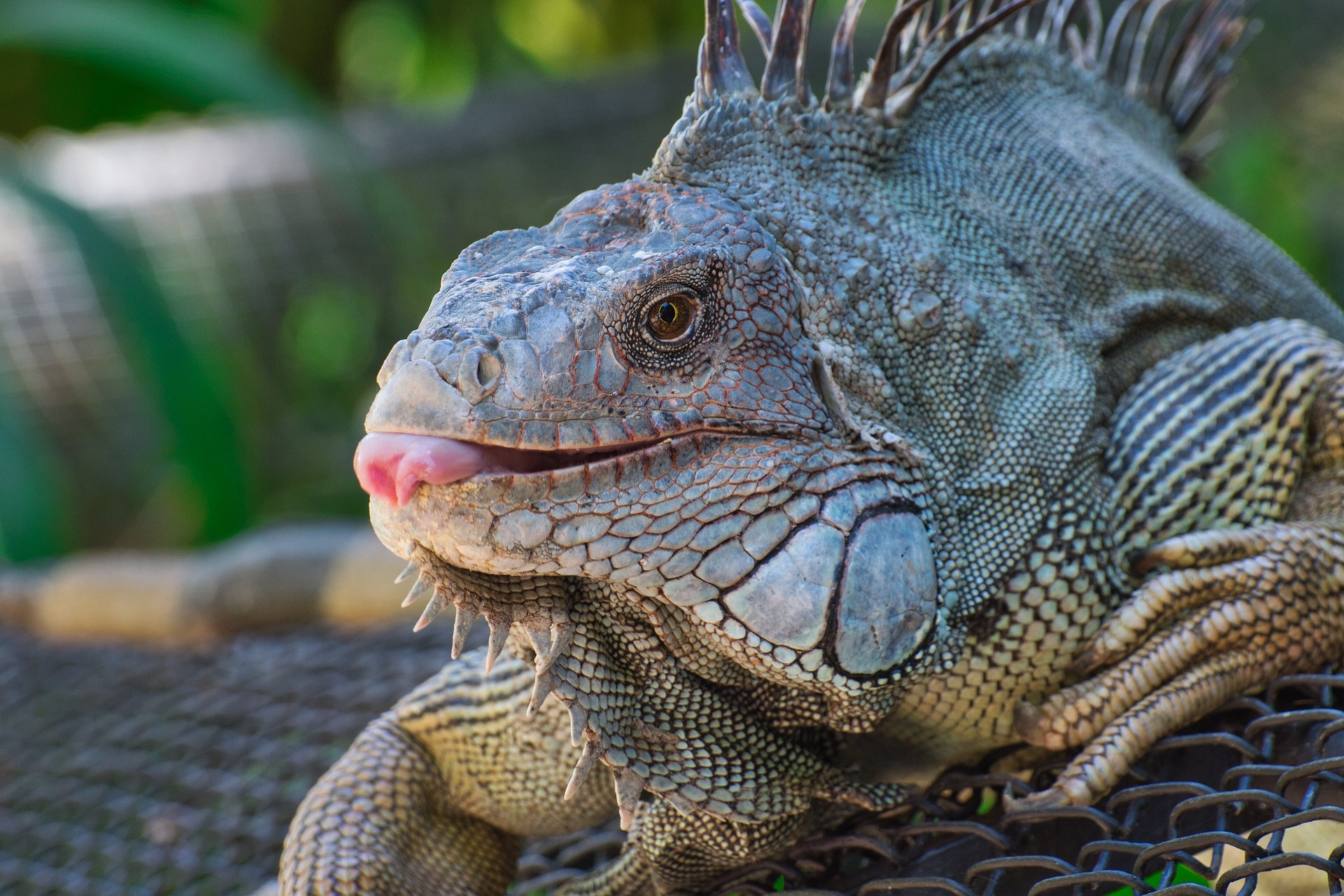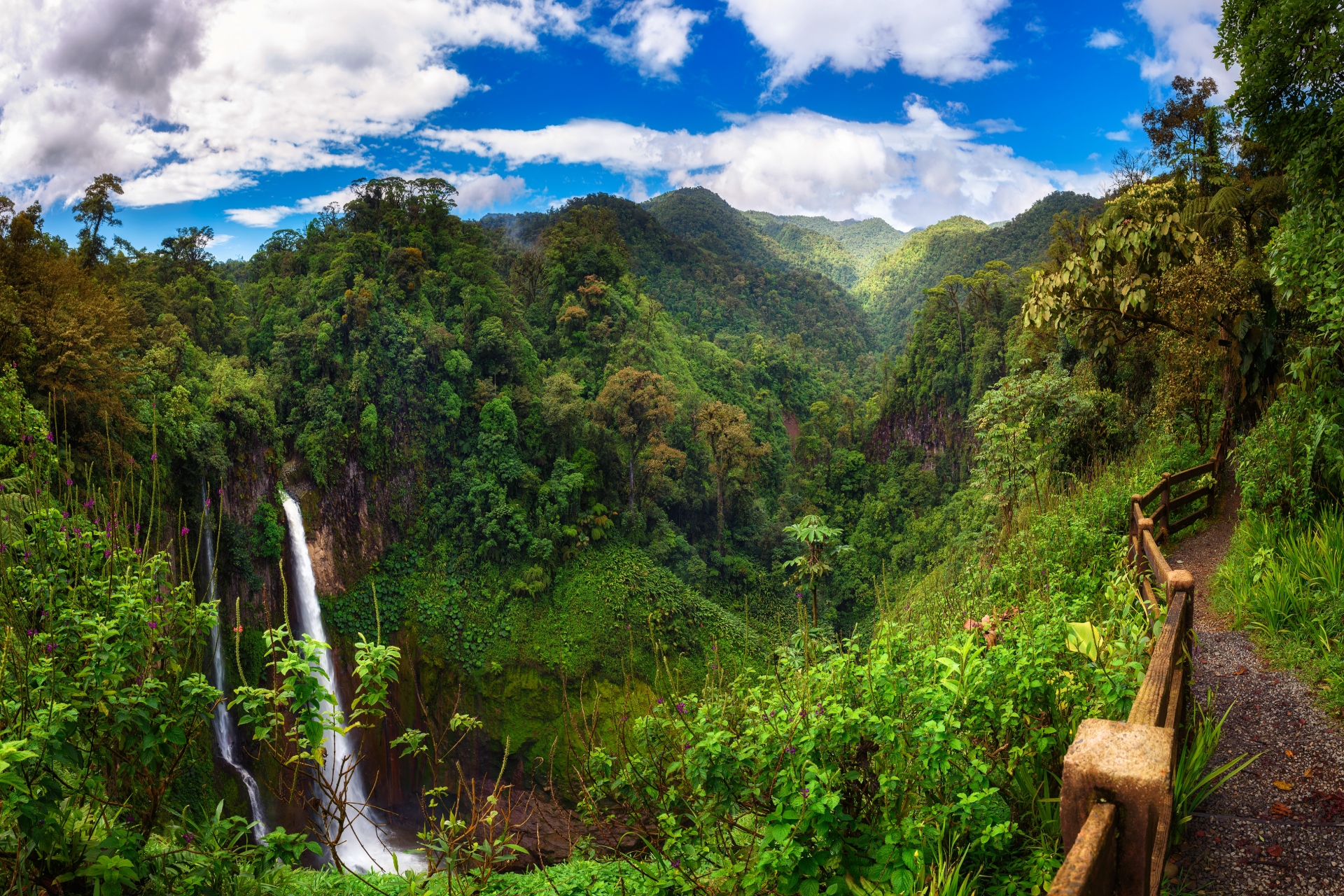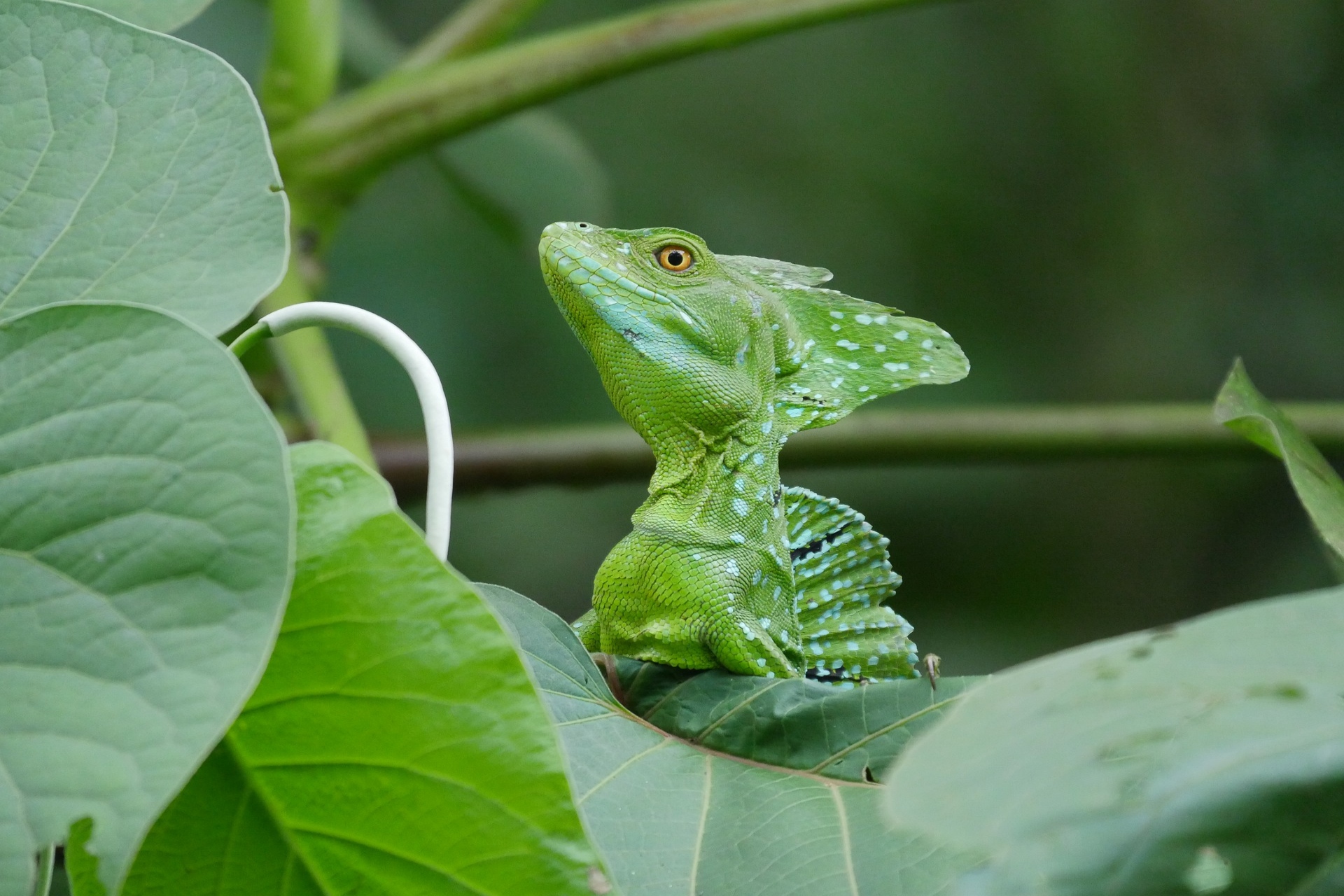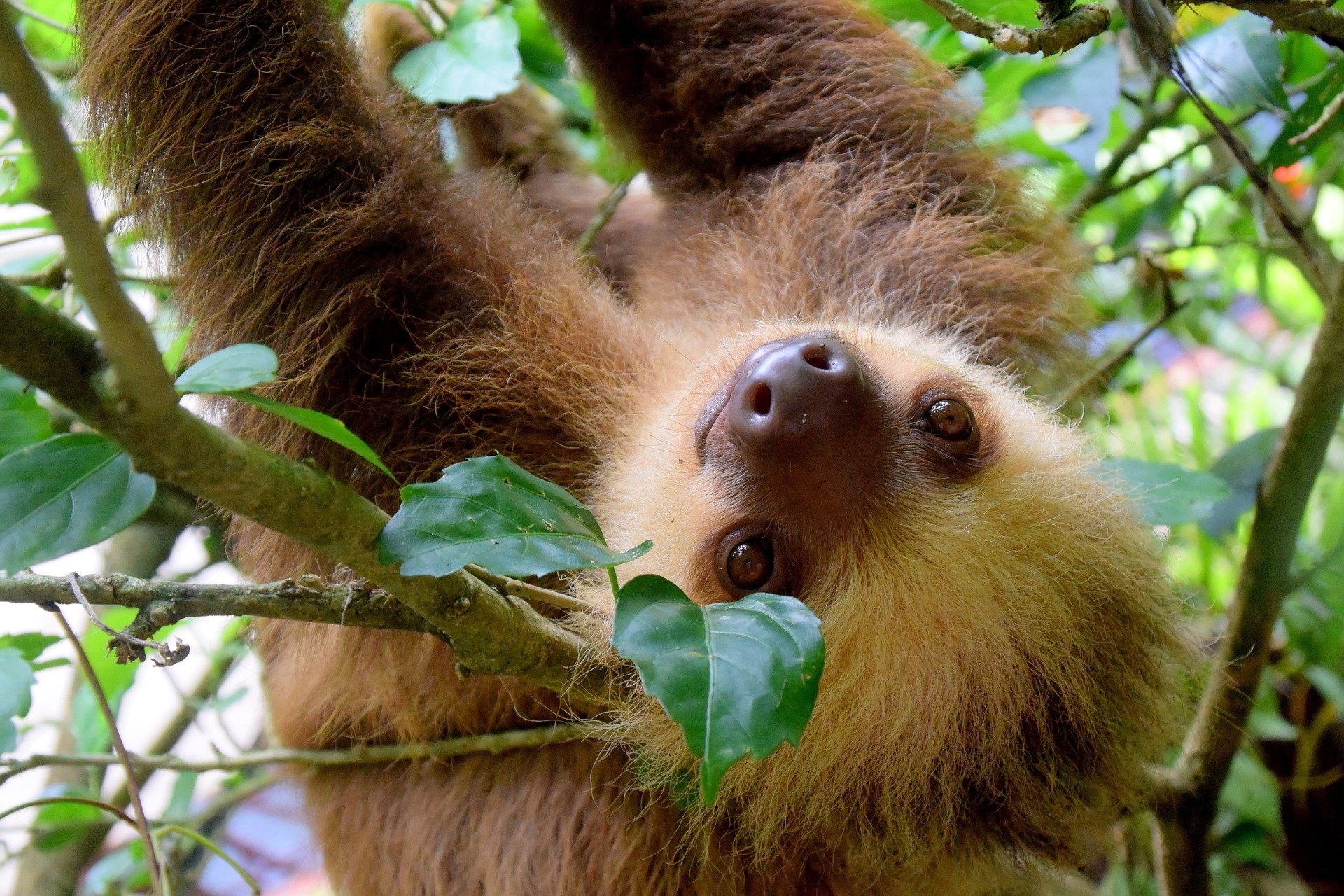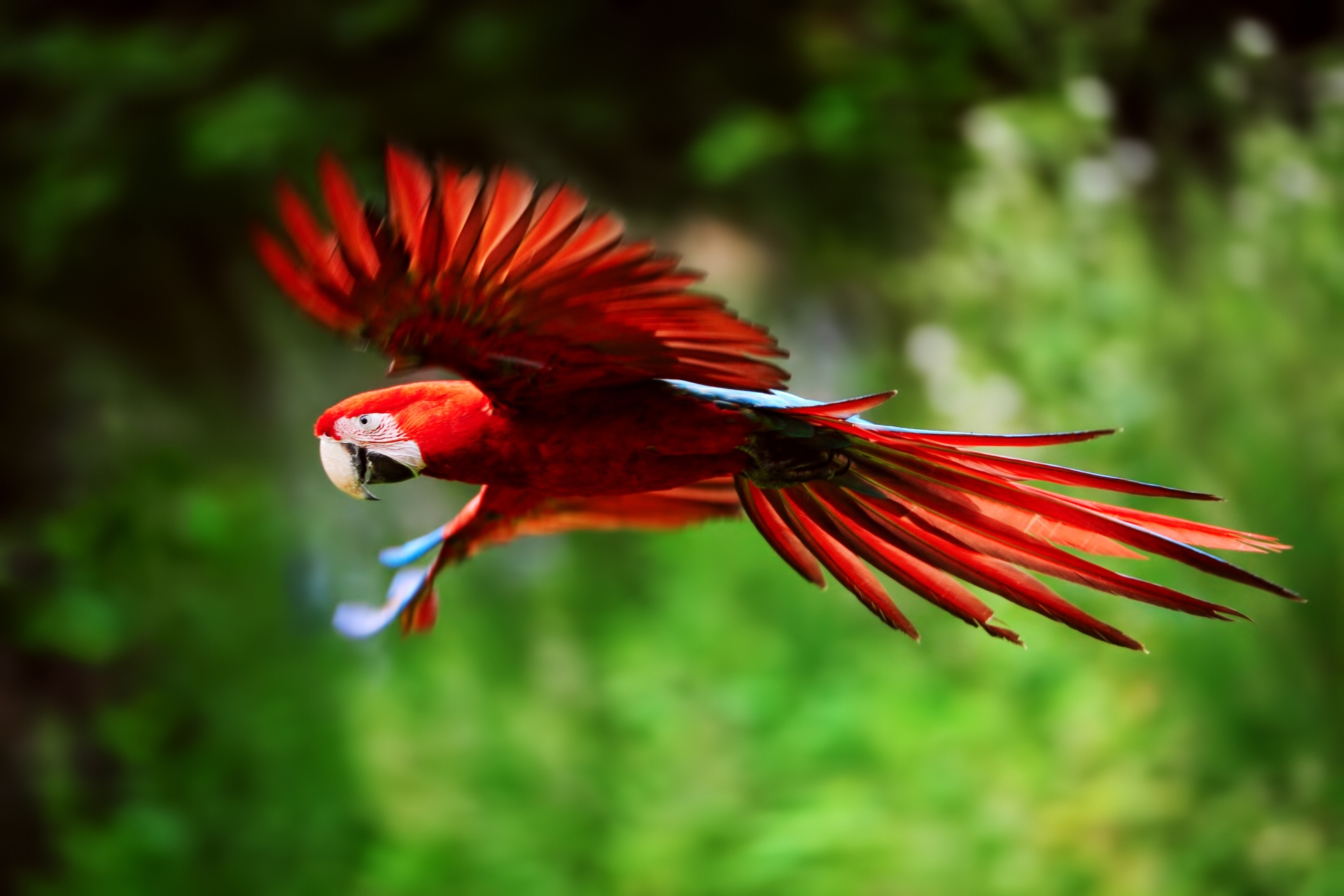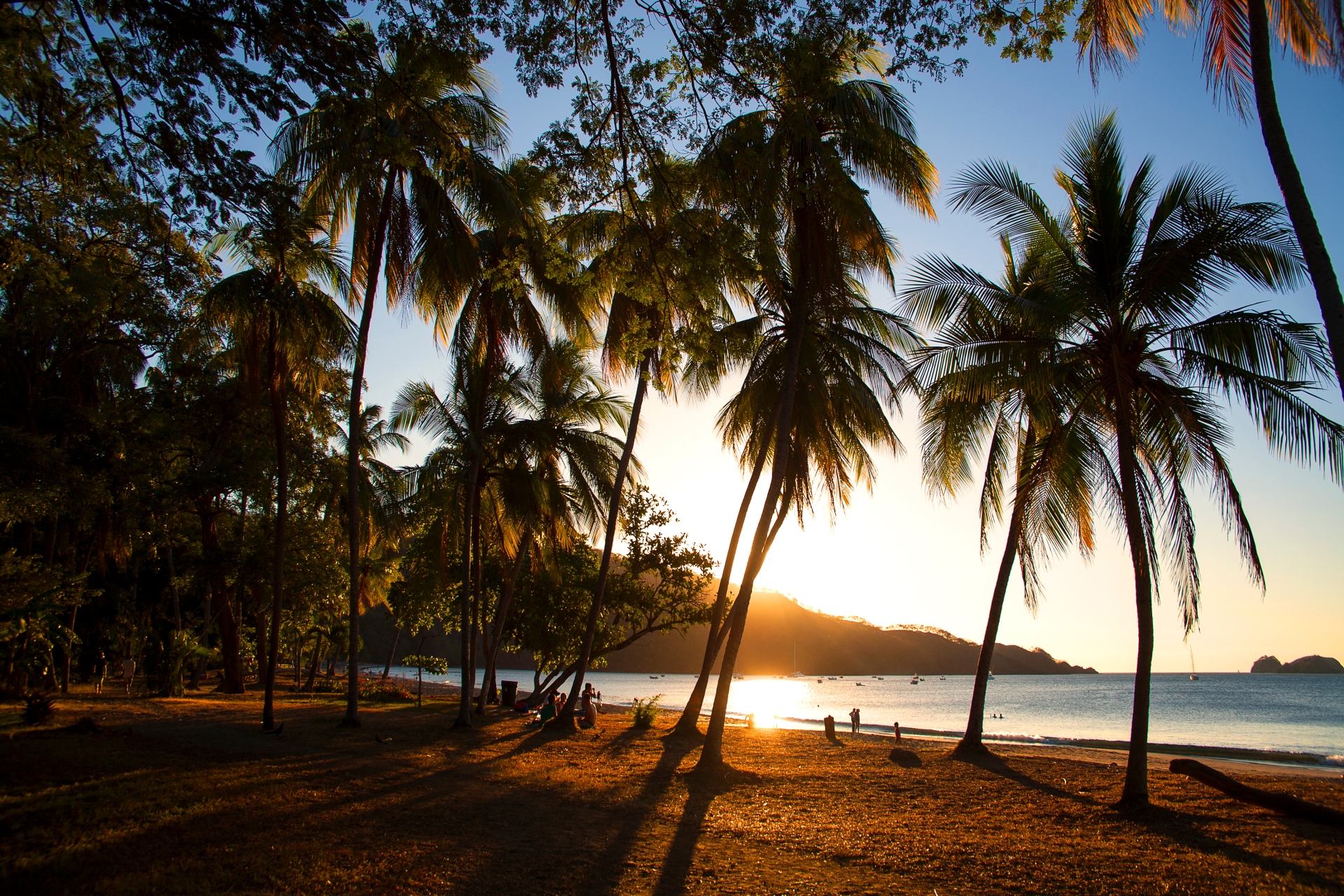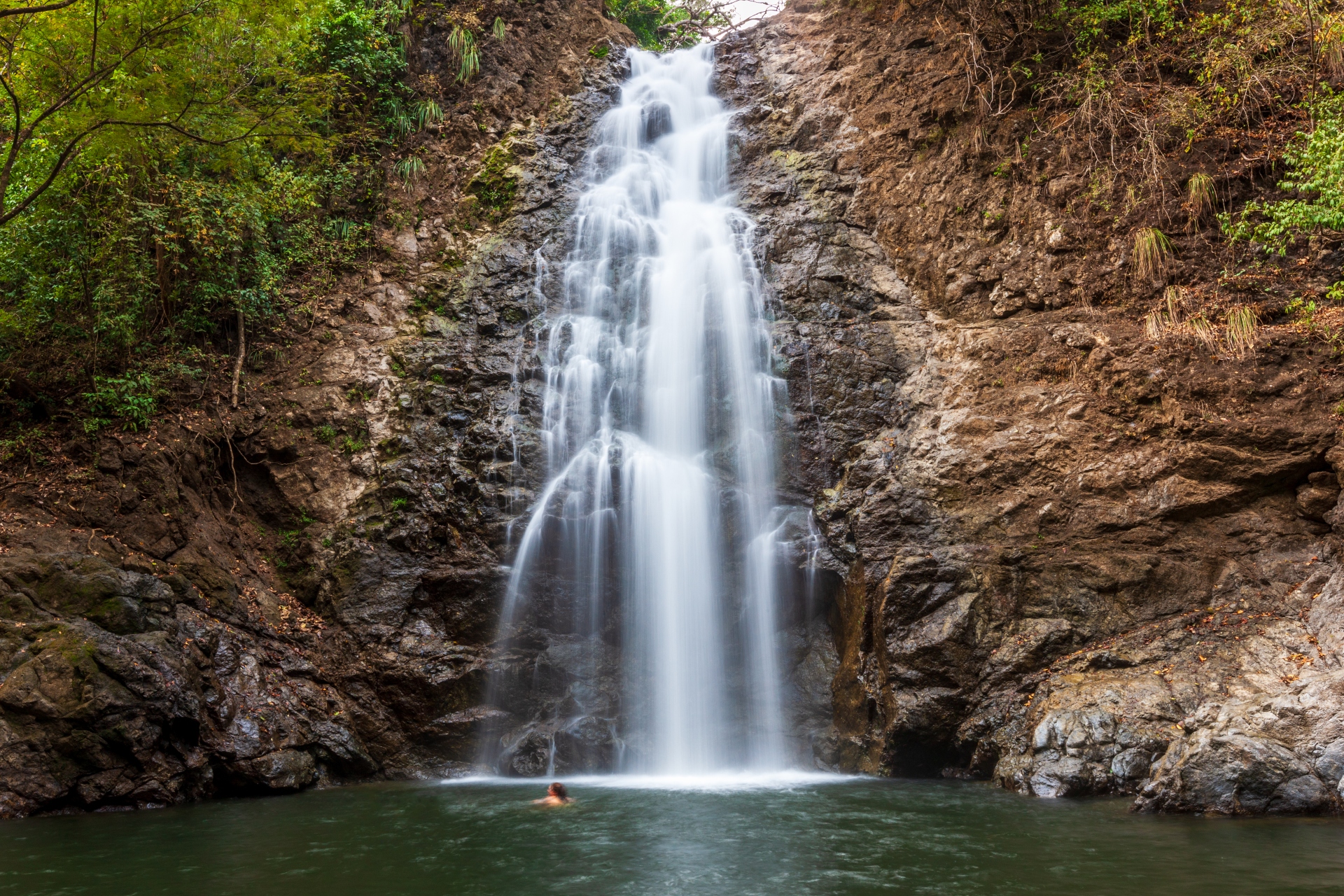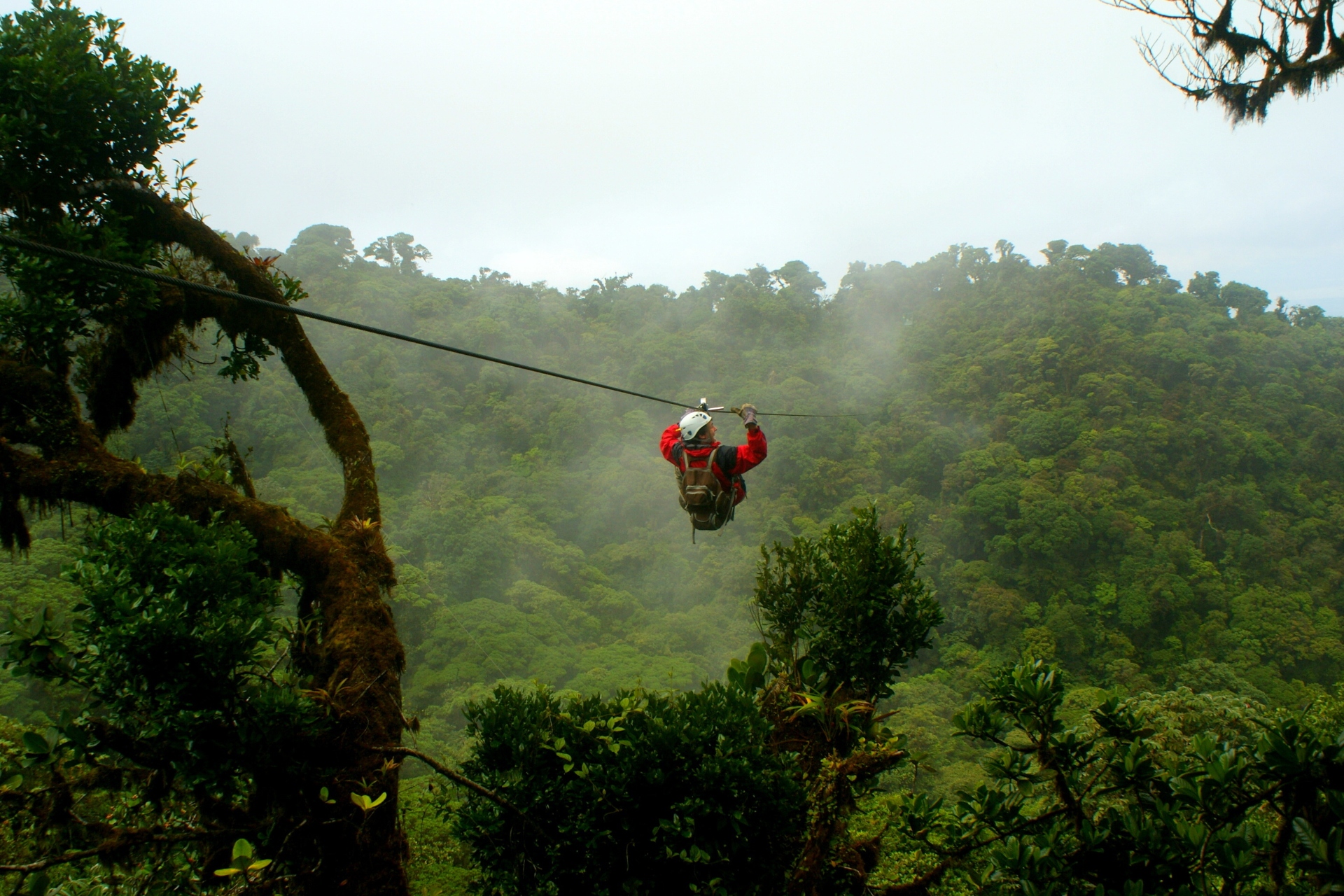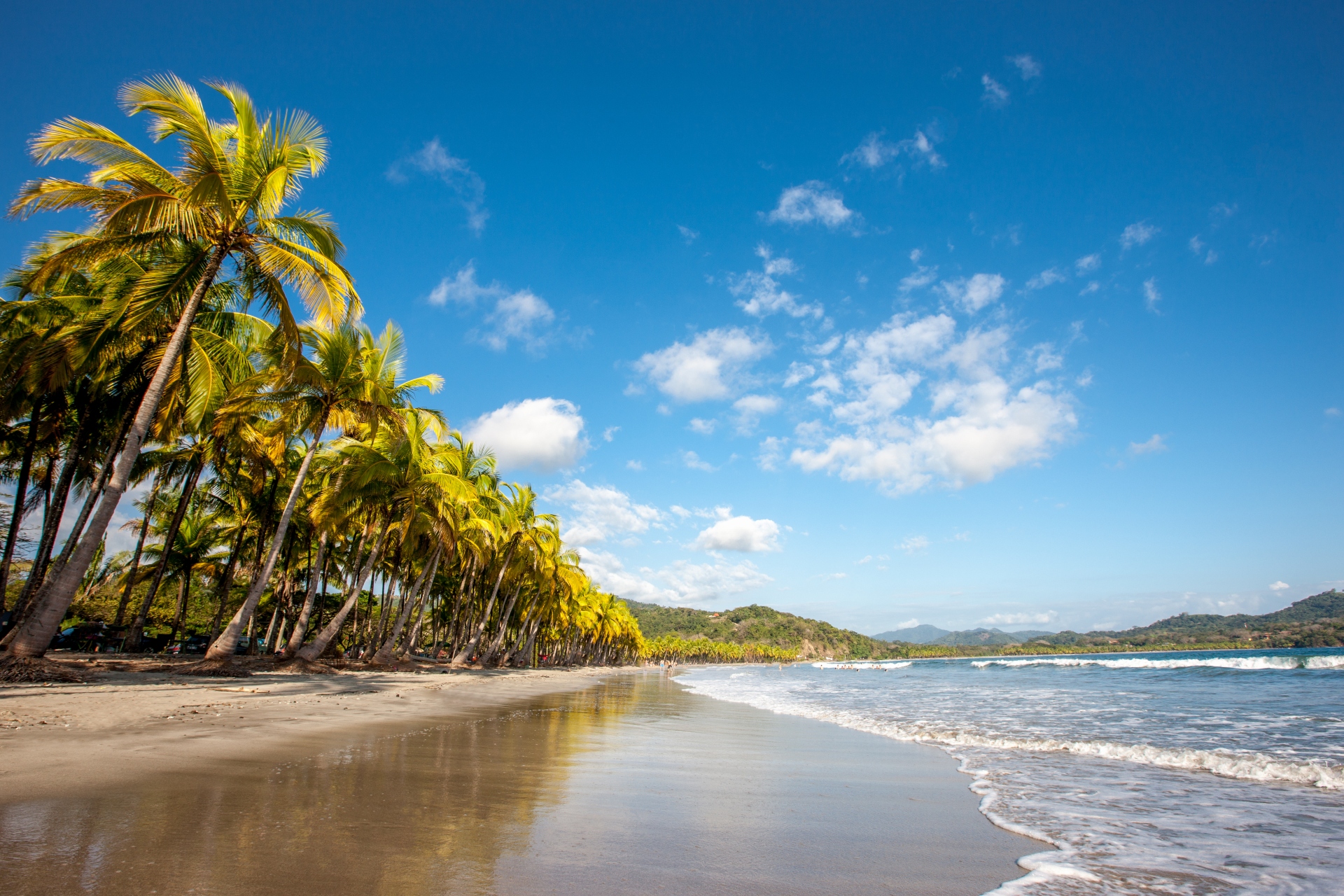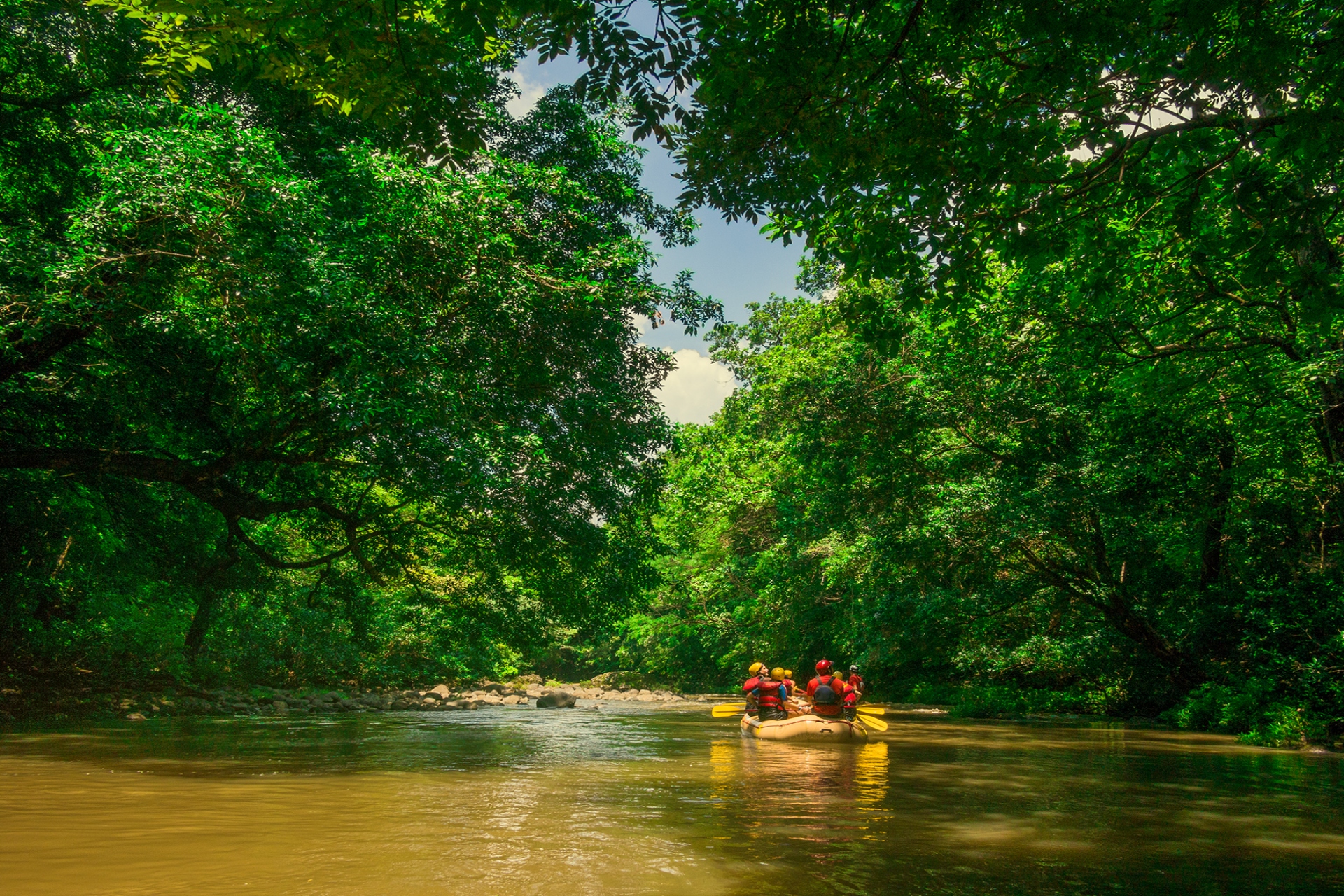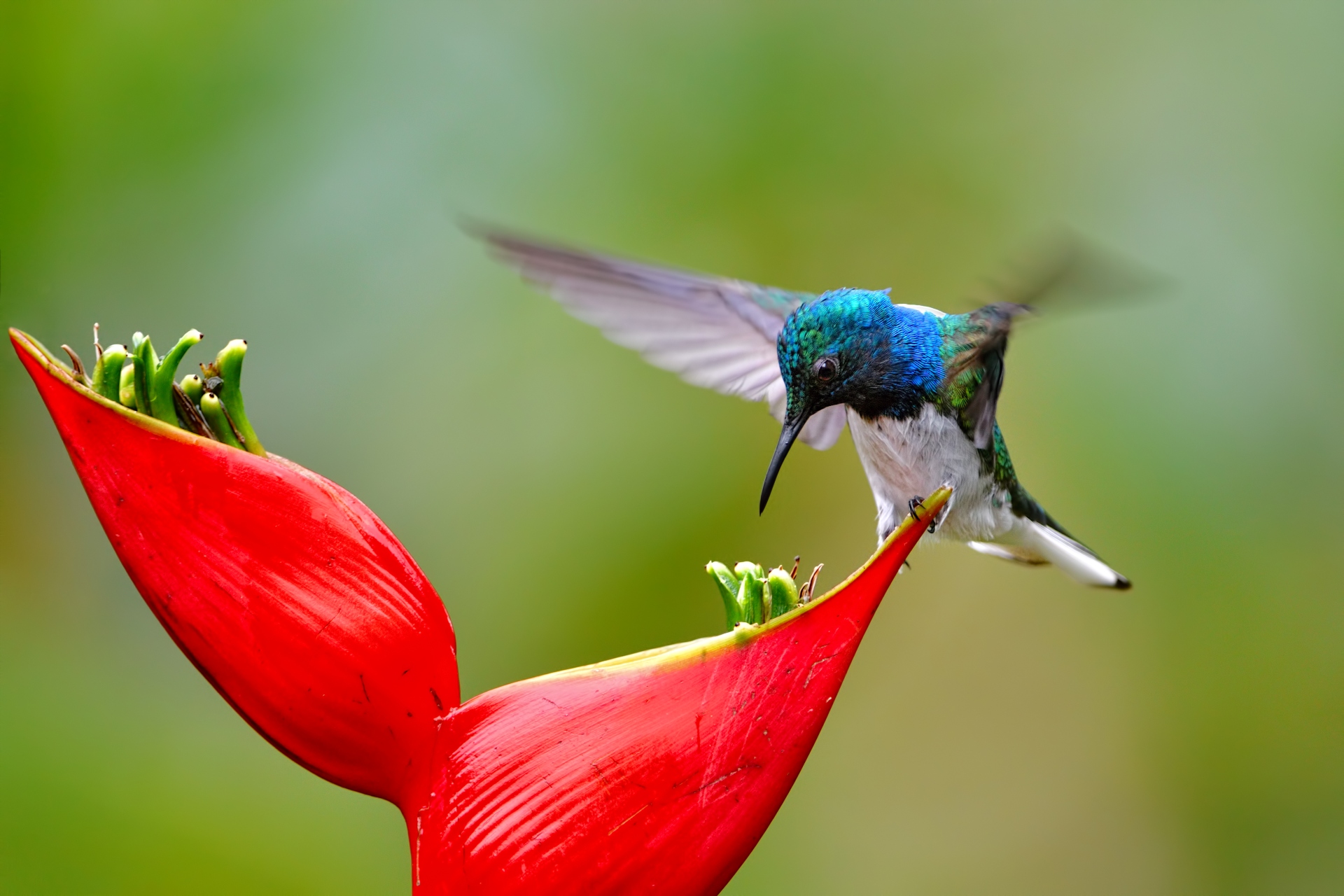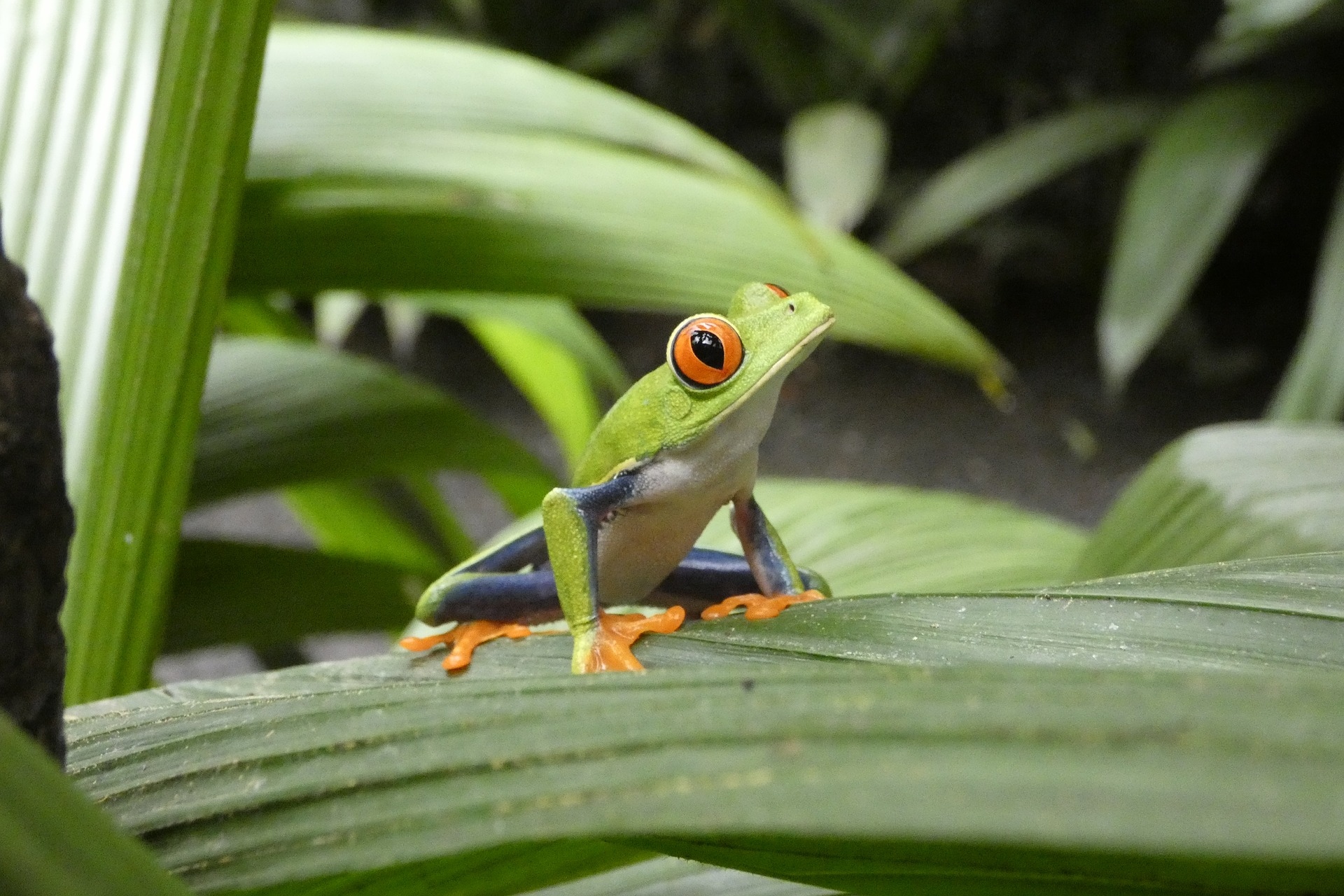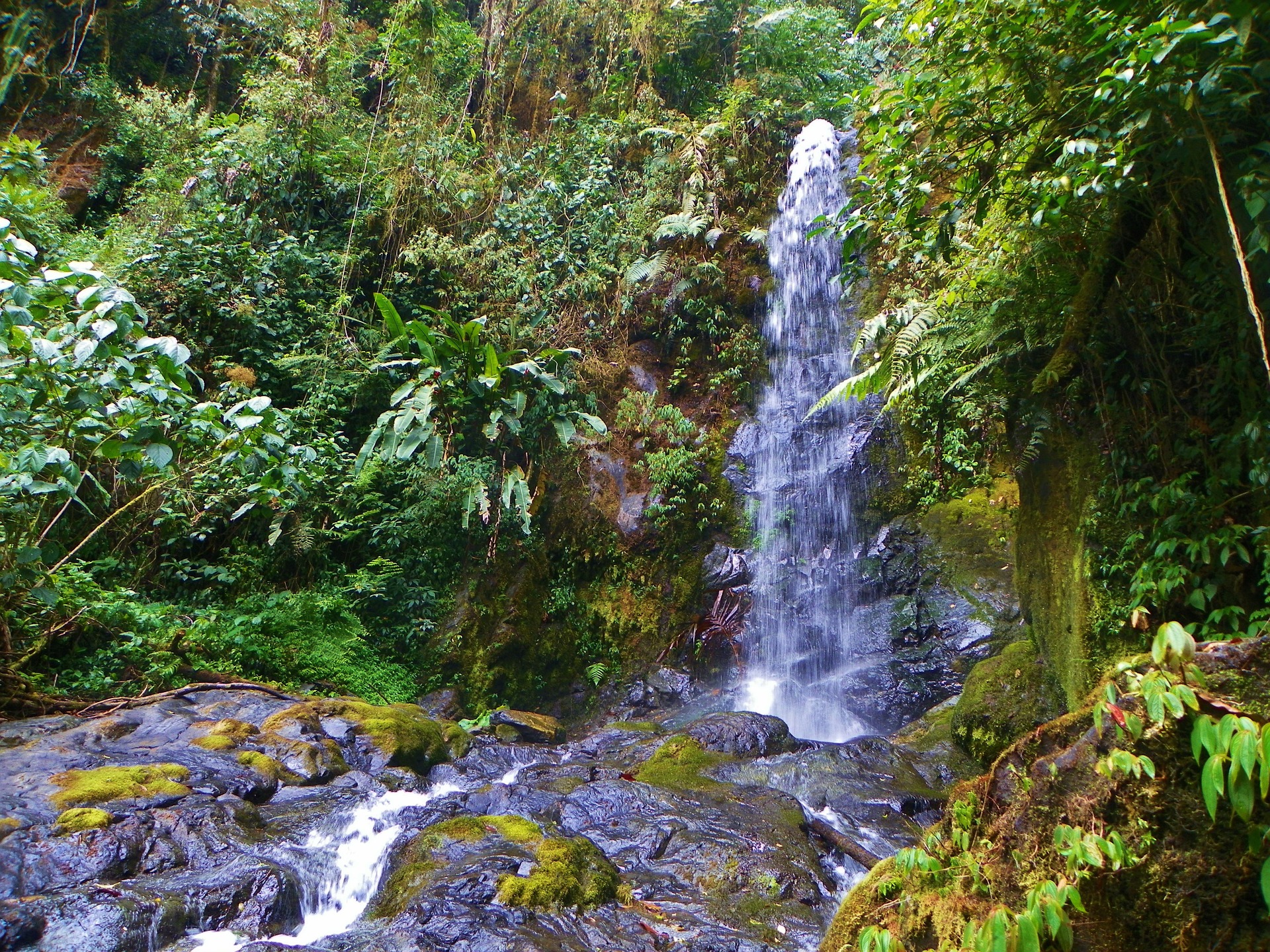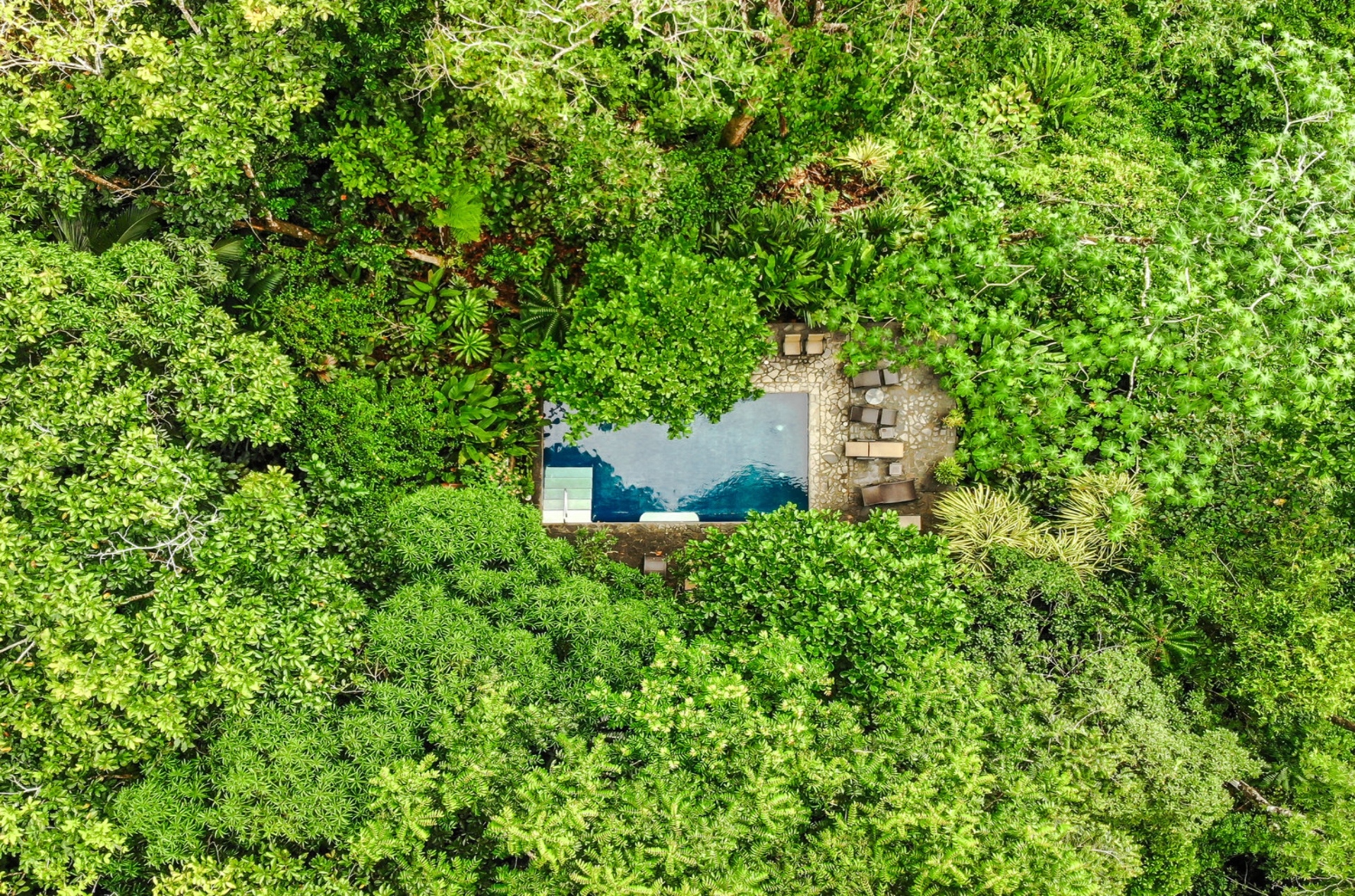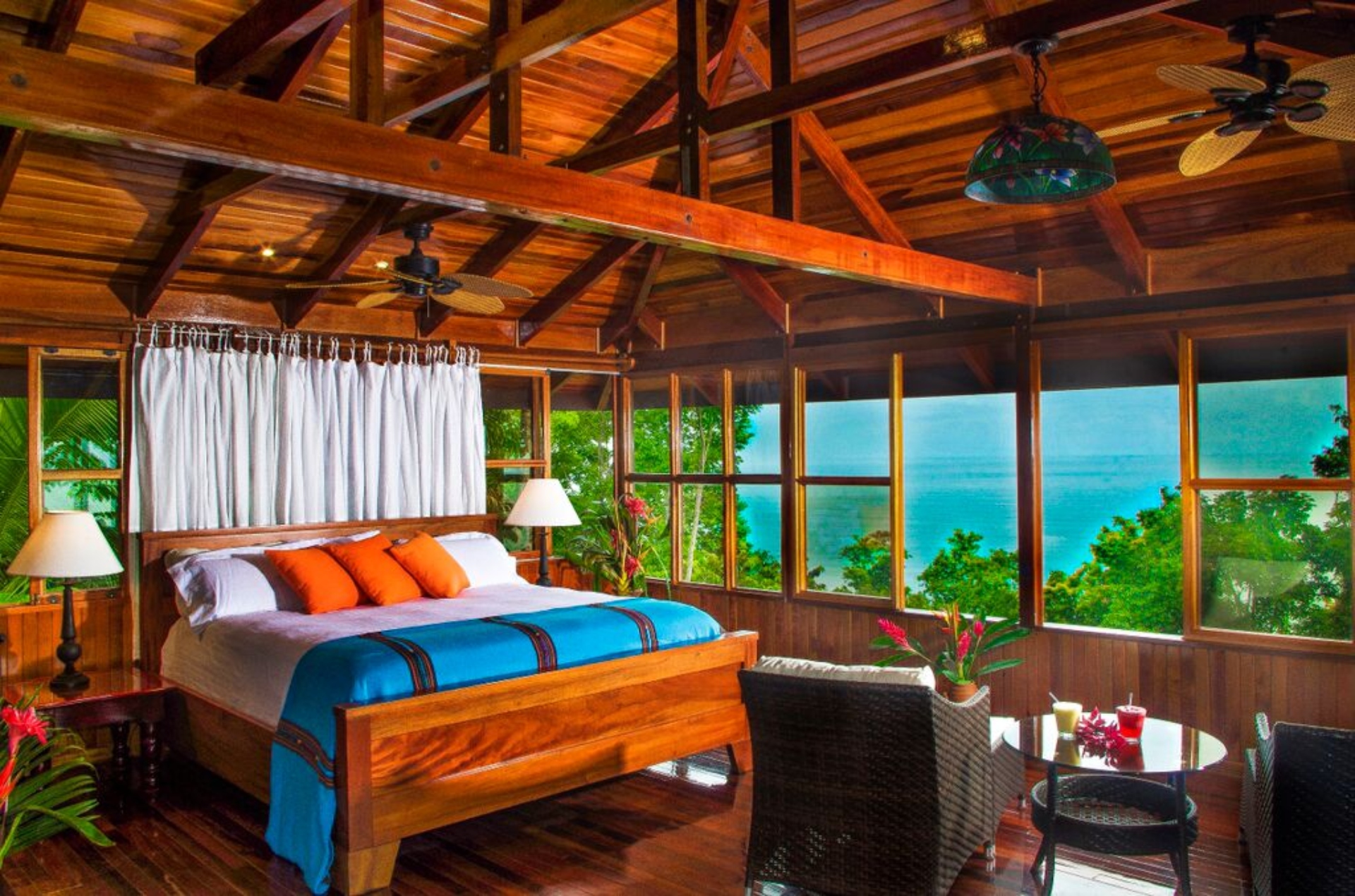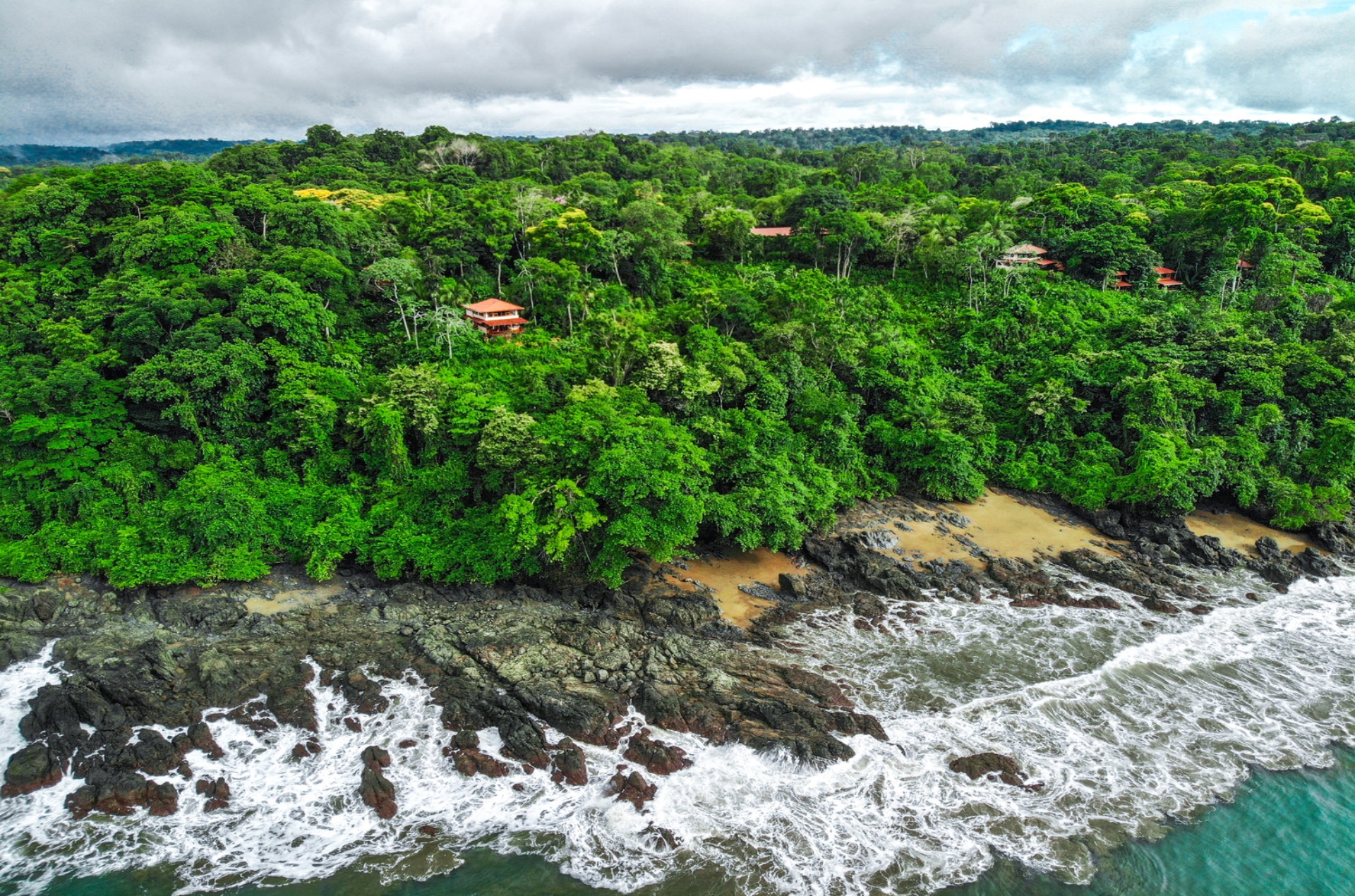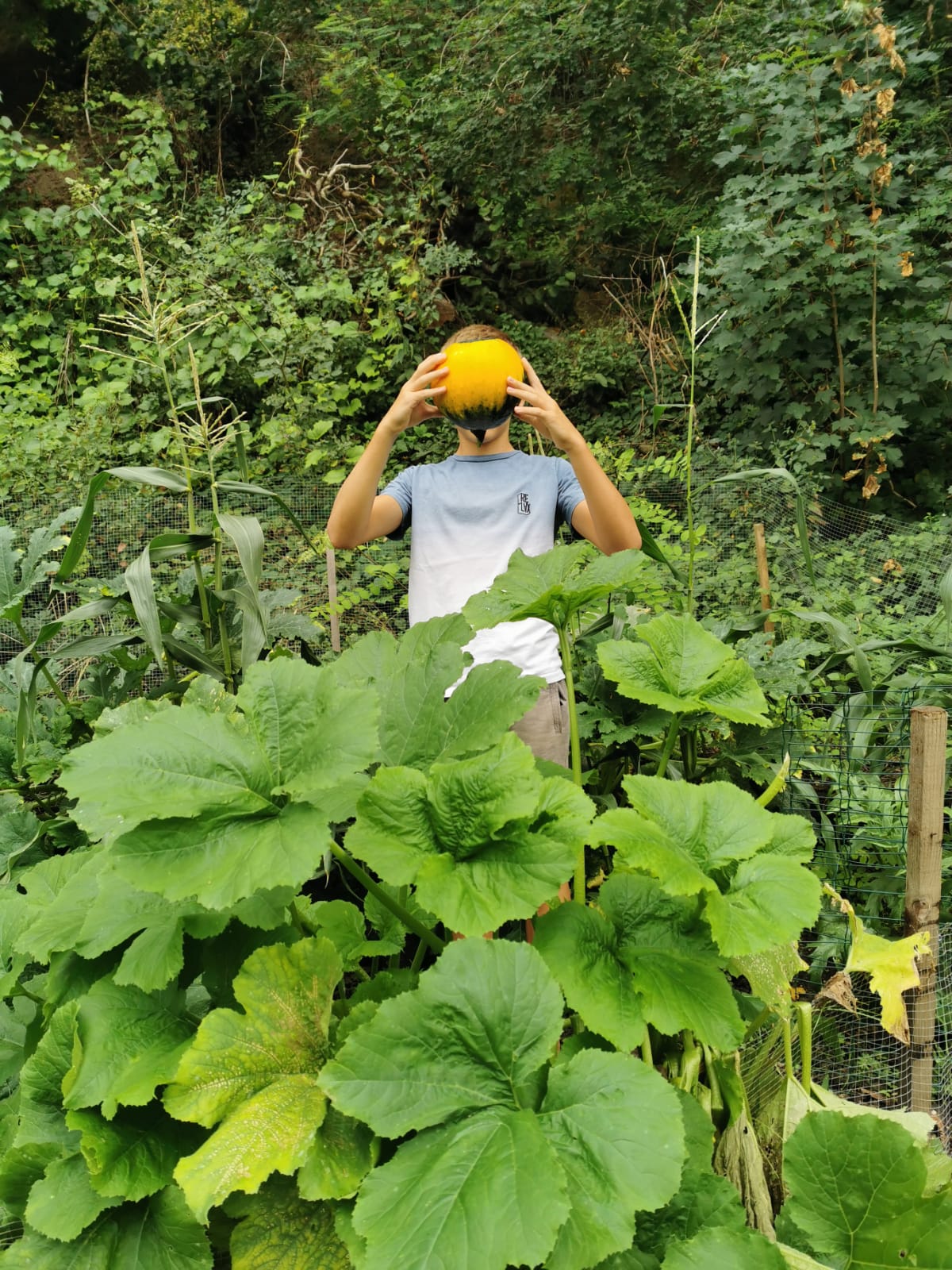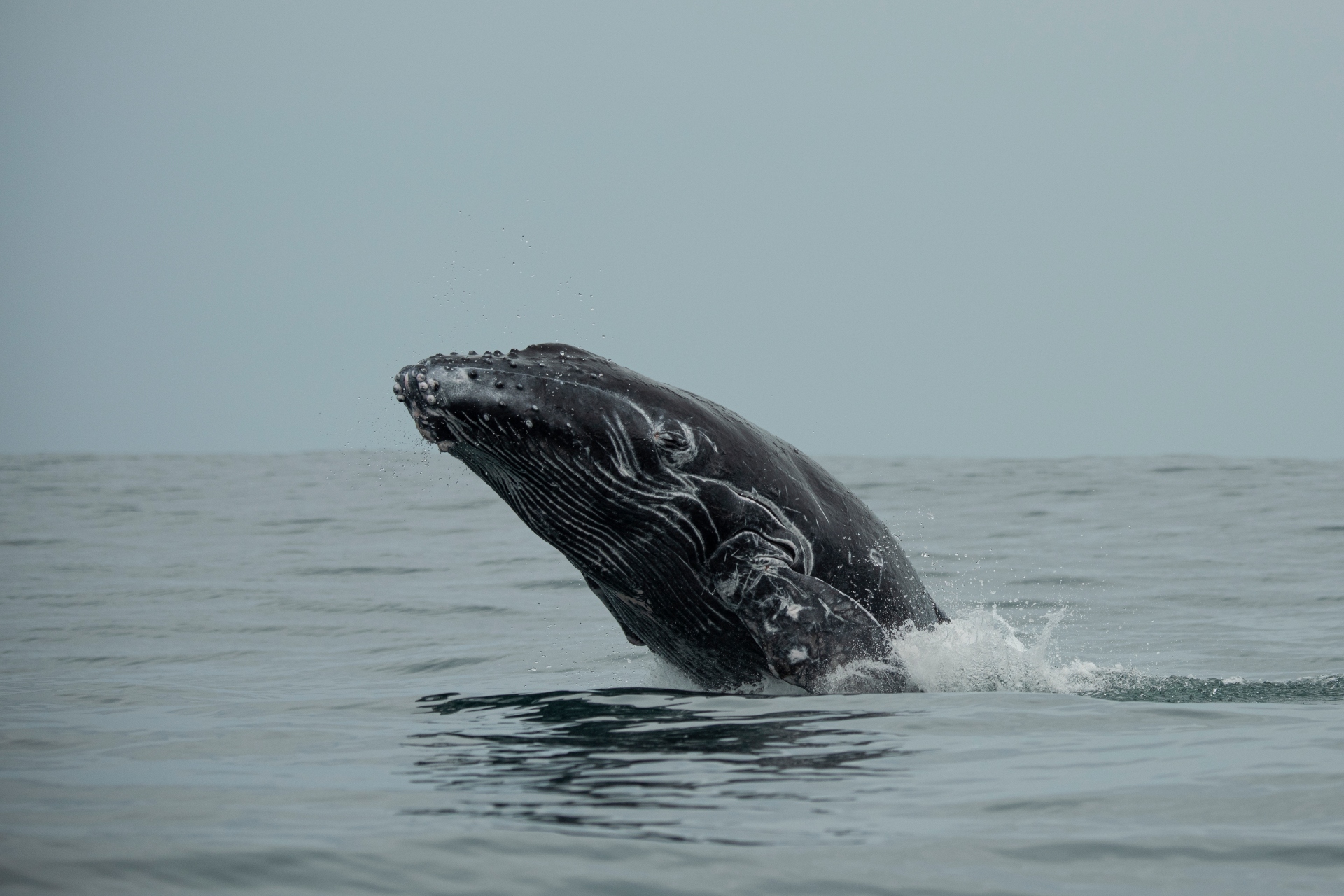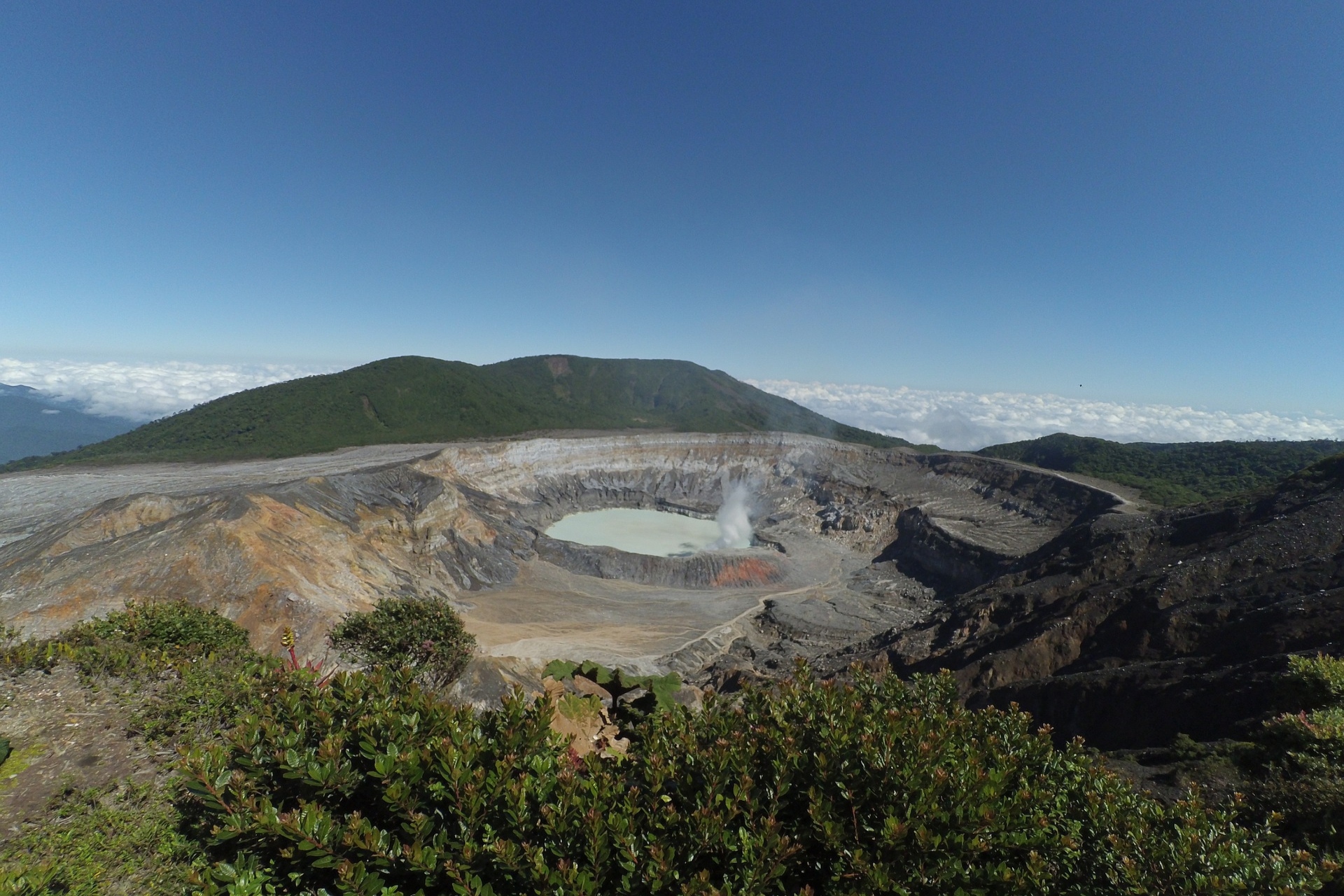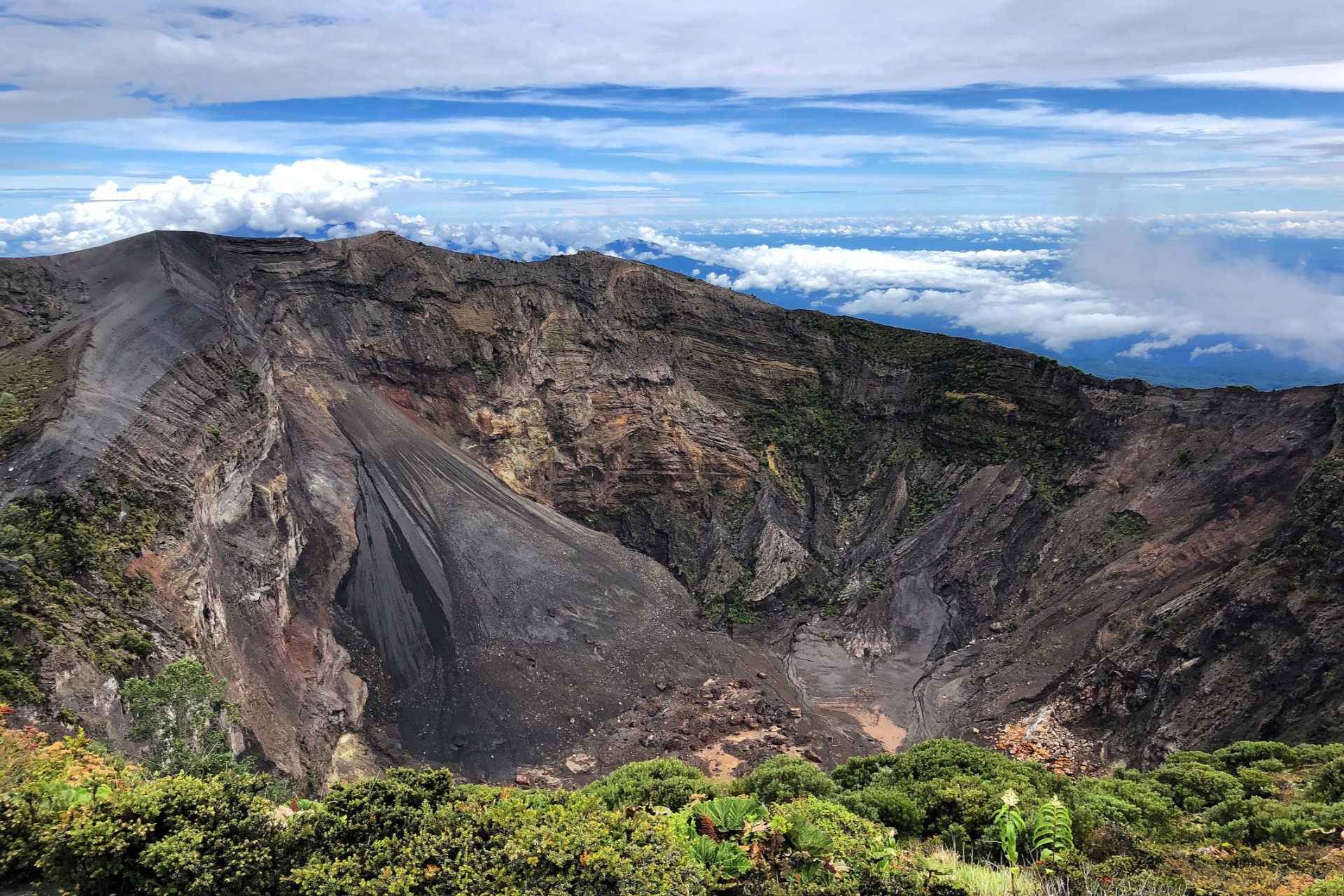Biological diversity and incredible landscapes
Do you dream of a nature destination in total autonomy, wild beaches or volcanic hikes? Do you like to observe wildlife in the middle of tropical forests filled with multicoloured birds or giant butterflies? Finally Creole Salsa is no longer a success for you? Then Costa Rica is the place for you!
Despite its small size, the country is home to no less than 5% of the world’s biodiversity protected by a large system of national parks and forest reserves.
The diversity of landscapes and microclimates, which can be enjoyed in a single day, makes this country a paradisiacal destination: during your trip, you will be able to enjoy the sun and beaches, adventure, nature, culture… Something to satisfy everyone’s tastes and desires!
The Caribbean coast to the east will be rather humid with frequent rains, mangroves and wilder wildlife. The Pacific coast, on the contrary, will be drier with a climate more suited to idleness and sun seeking.
When to leave?
In the dry season (from December to April), the tracks are easier to practice in 4×4, the animals are more visible because the vegetation is less dense, but the landscapes of the North Pacific coast are dry because of the lack of rain.
On the other hand, it is the ideal season for swimming and for enjoying water sports on the beaches. Be careful though, this season is very touristy!
During the green or rainy season (May to November), rainfall is more pronounced on the Caribbean coast and the Osa Peninsula (South Pacific coast). The temperature is more bearable, the landscapes change colour and become greener, and on a practical level, prices drop, as does the tourist influx.
On the other hand, you are more likely to have capricious weather.
Our favourites
Parc National Tortuguero
The Tortuguero National Park is located in the northeast of Costa Rica and is one of the main tourist icons of Costa Rica.
It is internationally recognized for protecting the most important nesting beach for green turtles in the Western Hemisphere.
In the terrestrial part of the park, 99% is protected in absolute terms for its resources and 1% is used as a visiting site. The marine area is 100% dedicated to absolute conservation.
Attention because of its success it is essential to book your accommodation in advance. Indeed one reaches it by a system of Lancha-taxi (boat) because the lodges are located on mangrove islands.
The transfer is sometimes a little bit sporty if the river level is low or if a storm breaks out but it necessarily leaves good memories !
Parc national Manuel Antonio
The park is surrounded by a lush and very humid rainforest, offering visitors the opportunity to observe Capuchins, sloths, coatis, raccoons, iguanas and many species of birds, as well as the increasingly endangered monkey-squirrel.
The park also protects 12 islands which are an excellent refuge for several species of sea birds. It also has beautiful beaches such as Espadilla Sur, Manuel Antonio and Puerto Escondido, and numerous mangroves.
Selvatura National Park
To do absolutely
Discover the rainforest canopy safely and at your own pace.
Strolling along the famous suspension bridges, visitors have the opportunity to enjoy a wide variety of flora and fauna of Monteverde. Take a trip to observe the endemic biodiversity of the rainforest canopy that is found nowhere else in the world.
The footbridges in the treetops are the best vantage point to observe the beauty of the cloud forest at all levels. For the more sporty it is also the only zip line circuit built entirely inside the cloud forest.
In this tour, visitors cross the unique canopy of the forest, suspended from ropes by specialised climbing equipment. This provides a wonderful experience and sensations that can only be compared to flying through the forest.
This tour not only combines the thrill of one of Costa Rica’s safest and most popular adventures, but it also offers a unique view of the cloud forest that in the past was reserved only for certain scientists brave enough to climb up to the canopy.
Las Baulas National Marine Park
The main attraction of this Marine Park is the nesting of the leatherback turtle: it is indeed the largest nesting site in the world. The sea turtle is an endangered species that is protected in Costa Rica.
You will also discover the mangroves: red, black, white… and all their biodiversity!
These mangrove forests are indeed a precious place for fish, crustaceans and molluscs.
Reptiles, amphibians and birds are also abundant.
Cahuita National Park
Discover the best preserved coral reef in the Caribbean and enjoy the scenery, culture and gastronomy that the area has to offer. White sandy beaches, a turquoise sea and diverse marine life are just some of the attractions this park has to offer.
In this ecosystem, anchored in the Caribbean but with a forest environment, you will find species such as raccoons, coatis, sloths, iguanas and basilisk. You will also be able to observe snakes such as the oropel and tamagá, and birds such as the sparrowhawk.
Parc National Barbilla

This protected area was first declared a biological reserve in 1982, before becoming a national park in 1998.
It is home to an important tropical rainforest and its 11,994 hectares are of great water importance.
Access to the park is difficult and facilities are scarce, so hikers are recommended to be accompanied by local guides from the community of Las Brisas de Pacuarito (where the administration of this national park is located).
The area is home to humid and very humid tropical primary forests.
It has a great biological richness due to the differences in altitude.
Its forests serve as a sanctuary for pumas, jaguars, ocelots, tapirs, monkeys and many species of birds.
Parc national Chirripó
Its variations in altitude, climate and geological characteristics make this park one of the richest ecological zones in Costa Rica.
During a hike, the traveller crosses a wilderness area made up of several ecosystems, from the 1400 metres of altitude of the Caribbean and Pacific slopes to the 3821 metres of the Chirripó peak (the highest point in the country).
On a clear day, you can see the coasts of both oceans in the distance!
The Chirripó is home to many species of birds, in addition to its various glacial forms, such as U-shaped valleys, lagoons (moraines) and terraces.
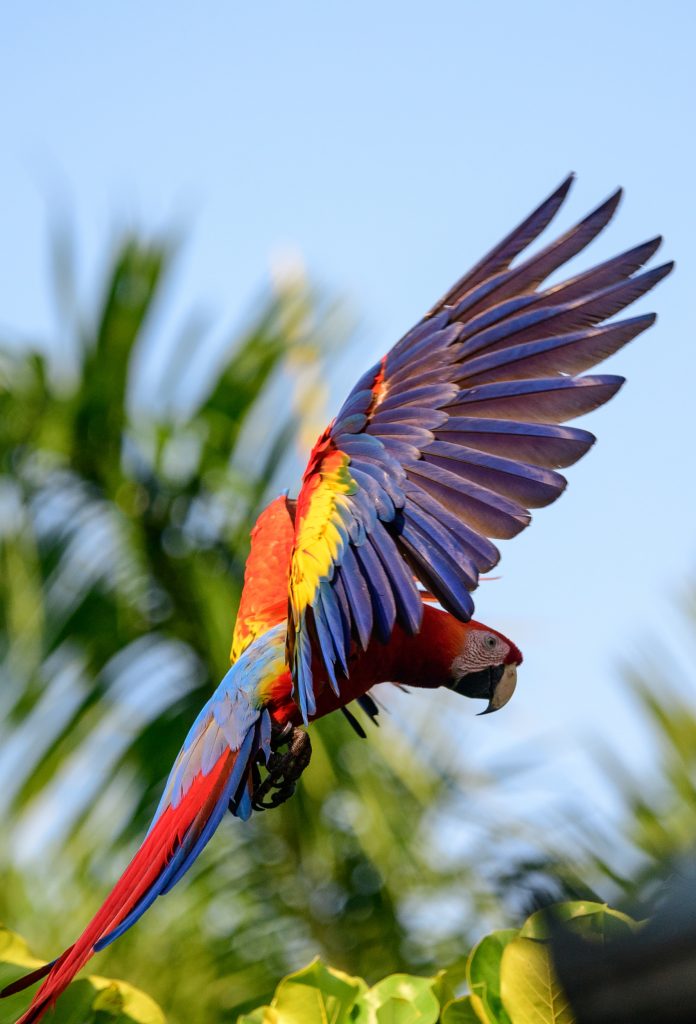
La Amistad International Park and Biosphere Reserve
Classified as a World Heritage Site by UNESCO, La Amistad International Park is shared between Costa Rica and Panama. It is considered to be the most extensive tropical forest mountain system in the country.
Its territory includes humid, rainy and cloudy forests.
Thanks to its great biodiversity and the differences in altitude, soil, climate and topography, it includes an extraordinary number of habitats. The area is criss-crossed by several natural paths and lookouts, ideal for hiking.
Parc National Barra Honda
The Barra Honda National Park covers 2,295 hectares and protects an important geological resource, a system of limestone caverns of stalactite and stalagmite formations.
The Barra Honda hill, which rises to an altitude of 450 metres, is made up of ancient coral reefs that emerged due to a levee caused by tectonic faults.
About 19 caves have been explored, including the Terciopelo cave, which is open to the public due to its easy access. The stalactites and stalagmites that compose it are the result of the dissolution of calcium carbonate, present in these structures, which, in contact with water, produces a chemical reaction.
Parc National Corcovado
More than 40,000 hectares of shallow lagoons, swamps, mangroves, rivers, rainforests, low cloud forests, fine sandy beaches.
The Corcovado is one of the most extraordinary ecosystems in Central America. Its biodiversity is also impressive: visitors can observe some 6,000 species of insects, 500 trees, 367 birds, 140 mammals, 117 amphibians and reptiles and 40 species of freshwater fish!
The park has many hiking trails and rustic camping huts. It is compulsory to enter with a licensed guide. The less adventurous can also enjoy the park by boat.
Our favourite accommodation : La Paloma Lodge in Osa
“The perfect blend of adventure and serenity.”
If you are looking for a wilderness immersion, qualified naturalist guides, an authentic rainforest adventure, come and spend a few nights at Paloma Lodge on the Osa Peninsula! This lodge allows you to immerse yourself in the natural beauty of this remote corner of the world.
Here at La Paloma Lodge you can see, hear, smell, feel and taste the jungle. La Paloma Lodge is located on a cliff top overlooking the Pacific Ocean and backed by lush tropical jungle.
The property is located on 14 acres of land, within walking distance of the cool waters of the Agujitas River and secluded black sand beaches. 7 bungalows and 4 bedrooms, are equipped with air conditioning and offer a sanctuary for those seeking to reconnect with nature.
The latest addition is the luxurious 3-bedroom private beach house, which is located off-site at La Paloma Lodge and offers tranquil seclusion in the wilderness while having access to the lodge’s amenities and support.
Relax amidst the splendour of the tropical jungle. From your balcony, watch the monkeys playing in the trees, see the scarlet macaws flying overhead or relax by the pool with your favourite book.
Explore Corcovado National Park, snorkel in the clear waters of Caño Island and enjoy everything this tropical paradise has to offer.
Parc National Isla del Coco
This national park was declared a World Heritage Site by UNESCO in 1997 because of its unparalleled natural beauty and biological richness.
The coast of the island extends over 24 km², has cliffs 183 metres high and includes an infinite number of underwater caves. The two main bays, Wafer and Chatham, in the north of the island, are home to the park’s two unique sandy beaches.
The extraordinarily transparent turquoise blue sea and the large number of rock formations bordering it provide a unique habitat for thousands of fish, sharks (hammerhead and white fin sharks), dolphins, manta rays, molluscs and other marine species.
This underwater wealth makes Cocos Island one of the most extraordinary places in the world for diving.
In addition, the island has, thanks to its climate, wooded areas that are always green and beautiful.
The numerous and impressive waterfalls and the legendary stories of pirates and gold diggers, supposedly hidden here, make this island a place of inestimable ecological and historical value.
Marine National Parc Ballena
A favourite site for humpback whales and several types of dolphins, depending on the season. Humpback whales come every year (from July to October) to complete their reproductive cycle.
They land at the tip of the park where there is a rock and sand formation that resembles a whale’s tail. This curiosity is the main attraction of this park.
In addition to the humpback whale, you can find in its waters species such as the spotted dolphin, bottlenose dolphin, manta ray, hammerhead shark, parrot fish, puffin.
Parc National Tapanti – Massif of death
This park is one of the places in Costa Rica where it rains the most. It is also the privileged habitat of 45 species of mammals, 260 species of birds and 30 species of reptiles.
Its thousand-year-old forests are made up of oaks and yellows (a species of tree with white wood).
At the heart of the Muerte Massif is “La Pente de Calderón”, classified as a historical heritage site, where horseback riding still takes place several times a year.
Monument National Guayabo
The Guayabo National Monument includes approximately 20 hectares of protected areas and consists of a group of pre-Hispanic architectural structures developed in stone and built between 1000 B.C. and 1400.
This wild region protects a remnant of the tropical rainforest. It holds the title of World Civil Engineering Heritage Site, awarded by the Society of American Civil Engineers, which recognizes the engineering achievements and techniques of the country’s original inhabitants.
The Volcanoes of Costa Rica
It is impossible to talk about Costa Rica without mentioning its Volcanoes. Situated on the Pacific Ring of Fire, there are more than a hundred volcanoes, 5 of which are still active.
Parc National Volcan Tenorio
Located in the volcanic Guanacaste cordillera, the park contains several living areas such as the low mountain rainforest, the very humid tropical forest and the very humid pre-mountain forest.
Among the most significant plants that can be seen there are palms, ferns, bromeliads and orchids.
The park is also home to many animals such as the capuchin monk and howler monkey, the tamandua anteater, the puma, the tapir and the collared peccary.
There are also trogon birds and tricaronculate arapongas.
The volcano Arenal
One of the most active in the country, he woke up in 1968. For a long time it was common to see lava projections but it is now in a calmer phase and only a few fumaroles can be seen at the top.
Nearby hotels are developing thermal baths thanks to rivers heated by molten lava.
Note that you cannot climb its flanks because it is too dangerous. Only a few observation points have been set up to allow access to it.
The volcano Irazú
The highest in Costa Rica with a peak at 3432 meters.
This stratovolcano has been active since 1723 and is still active today. Its crater is accessible and offers a green acidic lake which disappears by evaporation due to its increasing activity.
It is easy to approach the crater with a well-developed access.
The volcano Turrialba
Another stratovolcano that peaks at more than 3300 metres above sea level. in full activity.
Its last eruption in 2016 produced a cloud of steam and ash at an altitude of more than 4km.
The ash was deposited as far as San José. It is of course forbidden to go near it.
The volcano Poás
Another stratovolcano that peaks at 2704 metres above sea level and is permanently manifested by fumaroles and seismic tremors.
It was easily accessible until 2017 but is closed today because its activity makes it very unstable.
A second crater is interesting because it is right in the middle of the vegetation.
The volcano Rincón de la Vieja
The last of the active stratovolcanoes peaks at 1895 metres, it has two volcanic cones with a crater and each has several possible eruption sites.
The fumaroles and geysers are clearly visible during the rains and this feeds the surrounding hot springs.
Access to the crater is closed.

